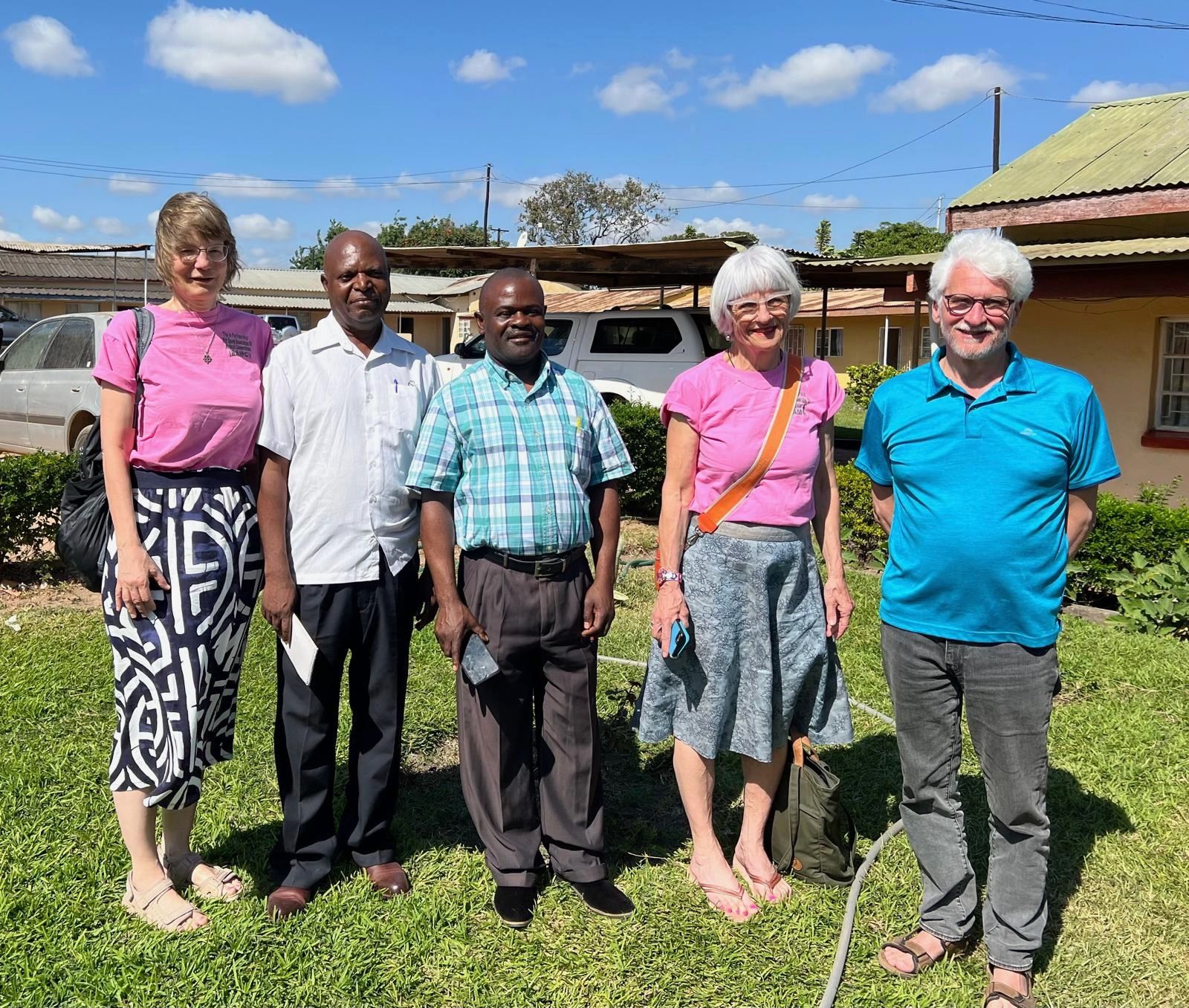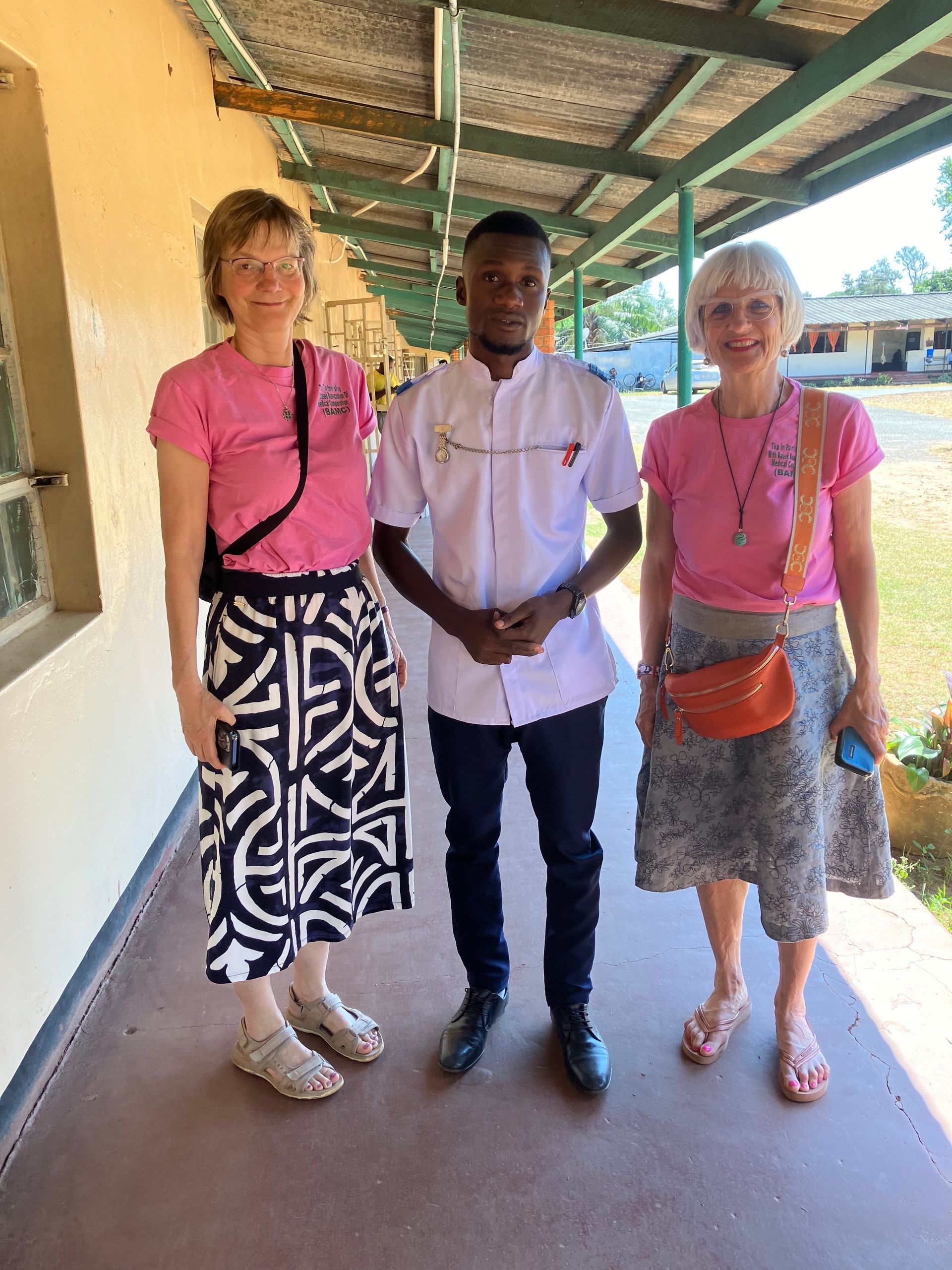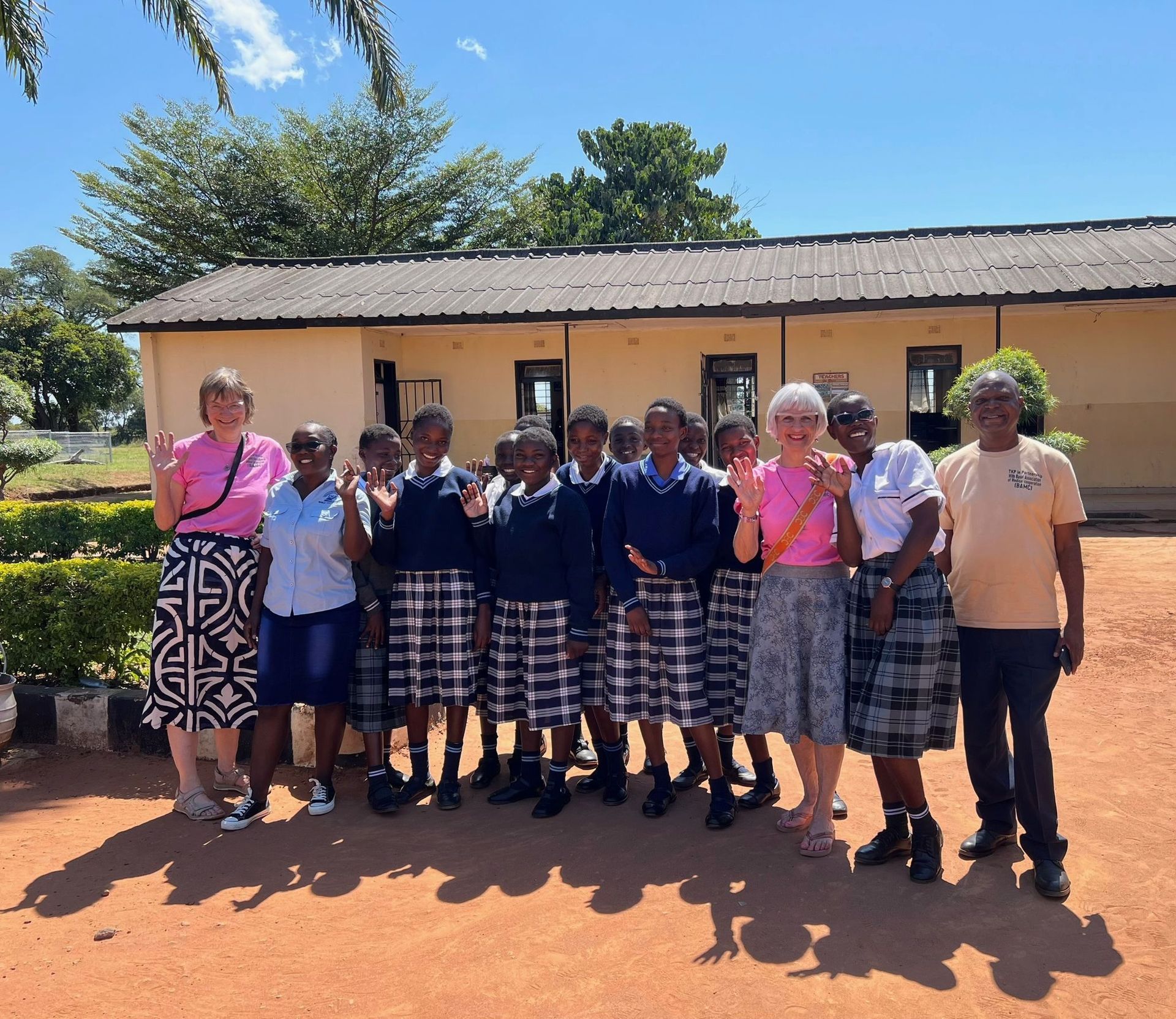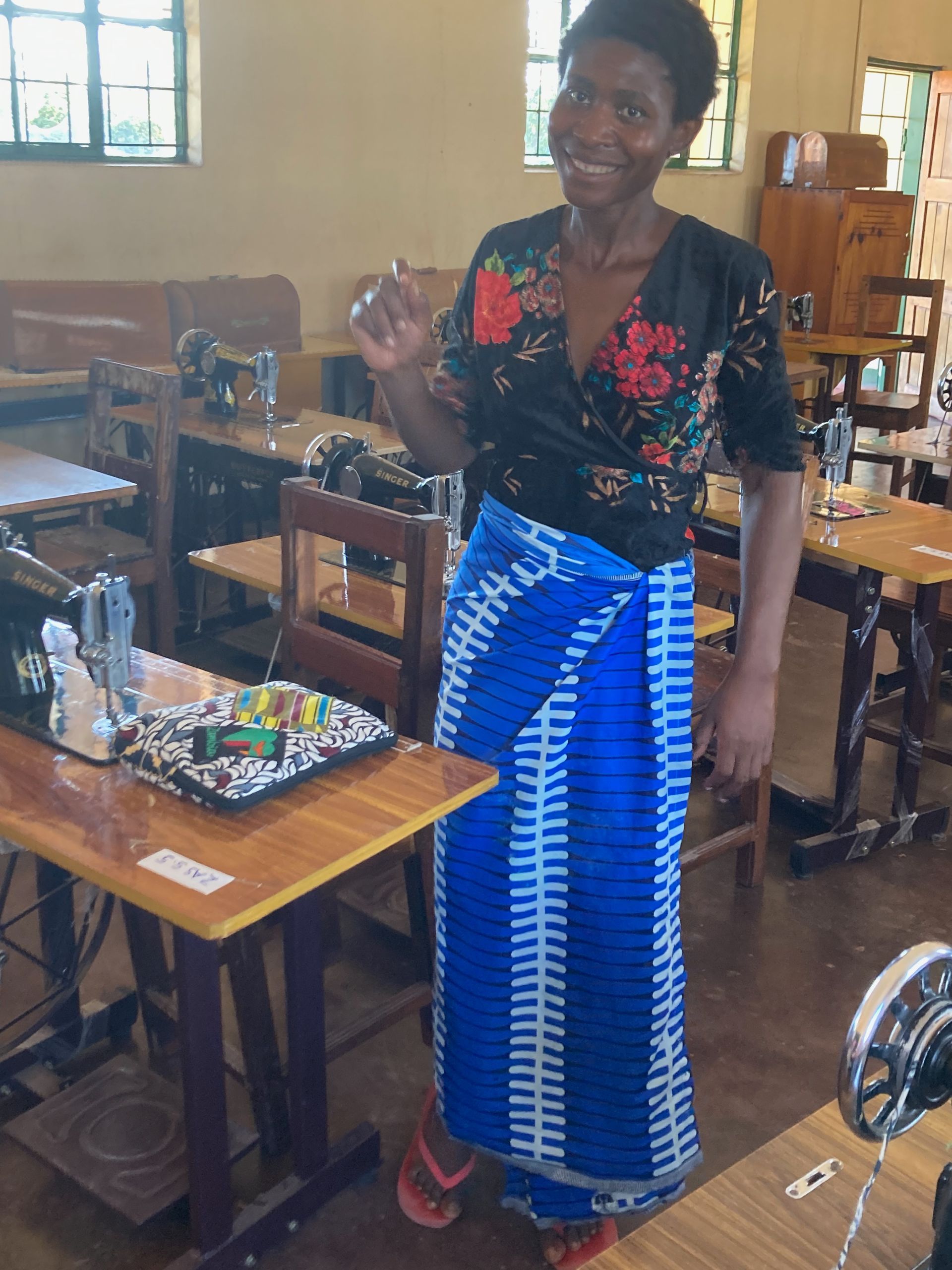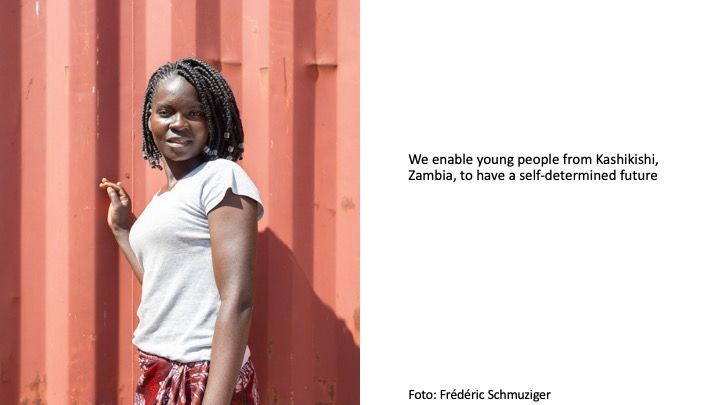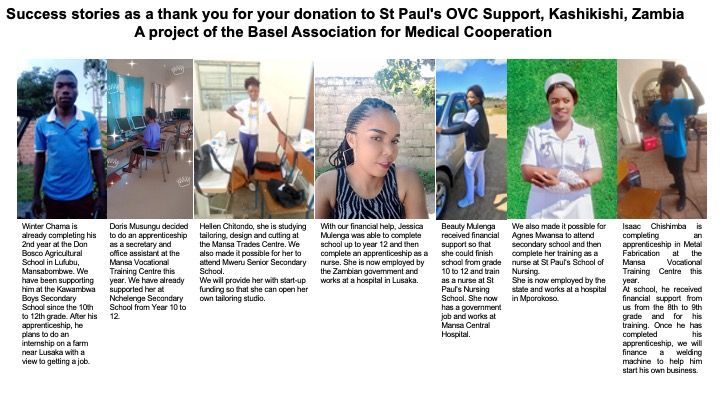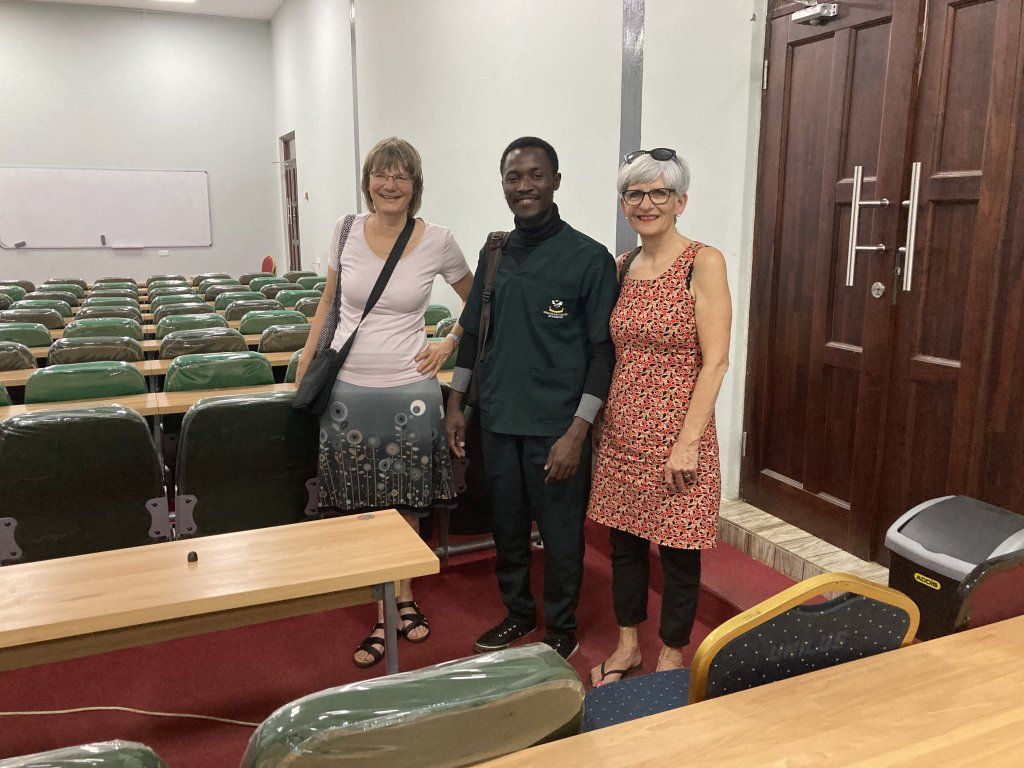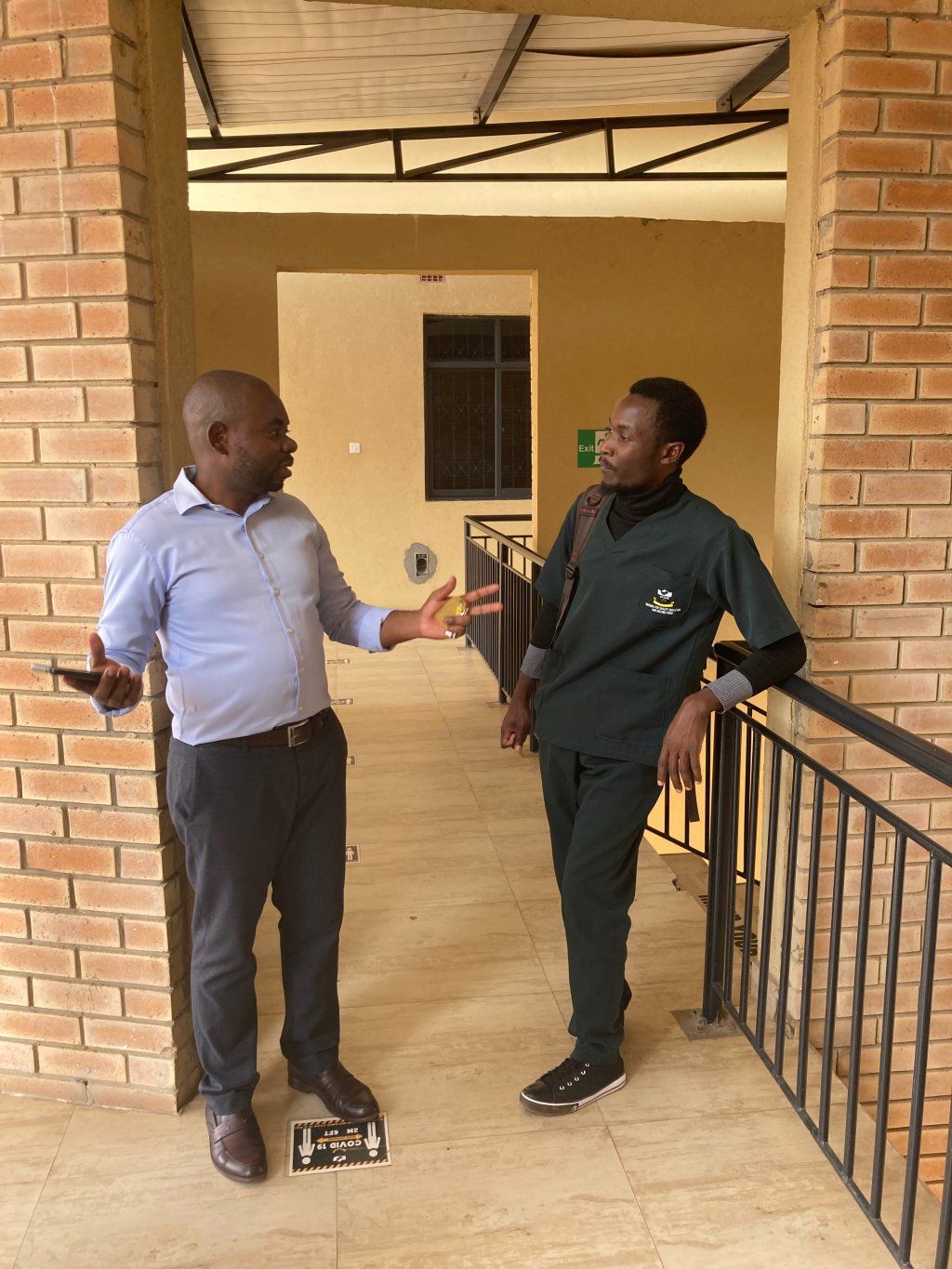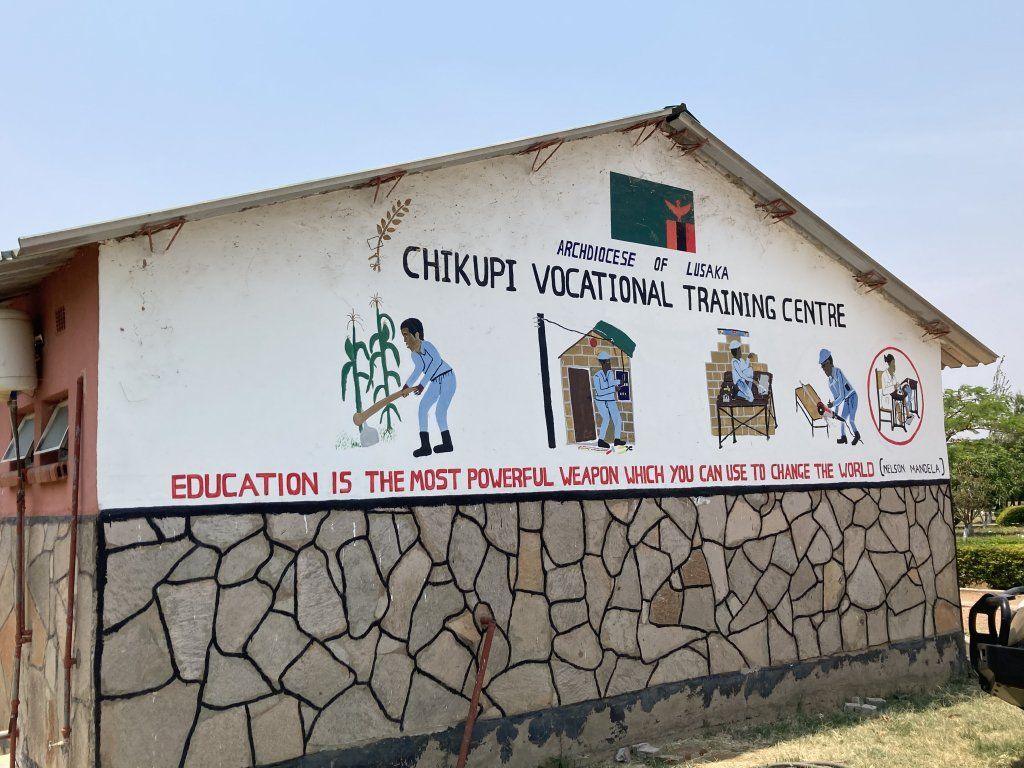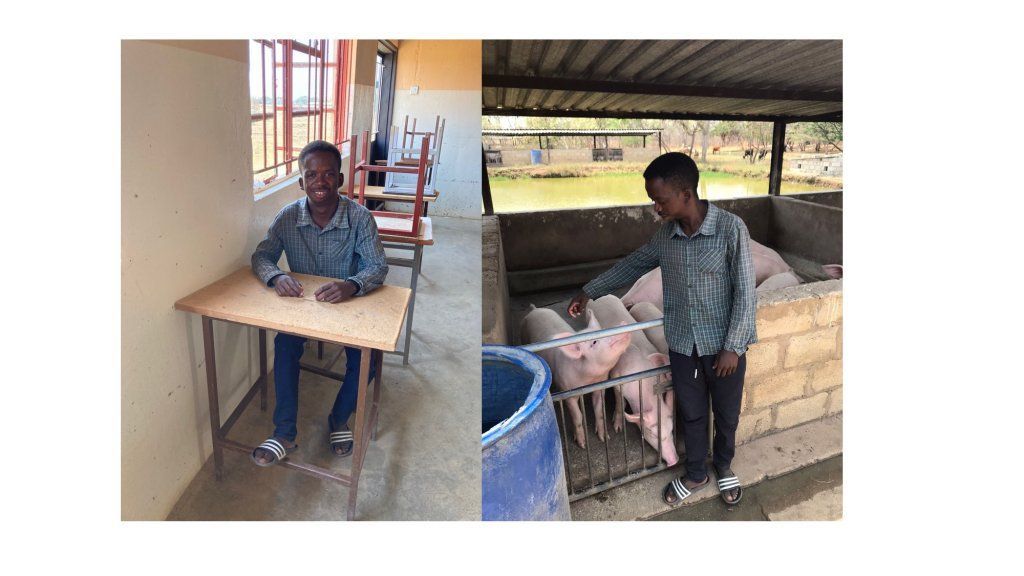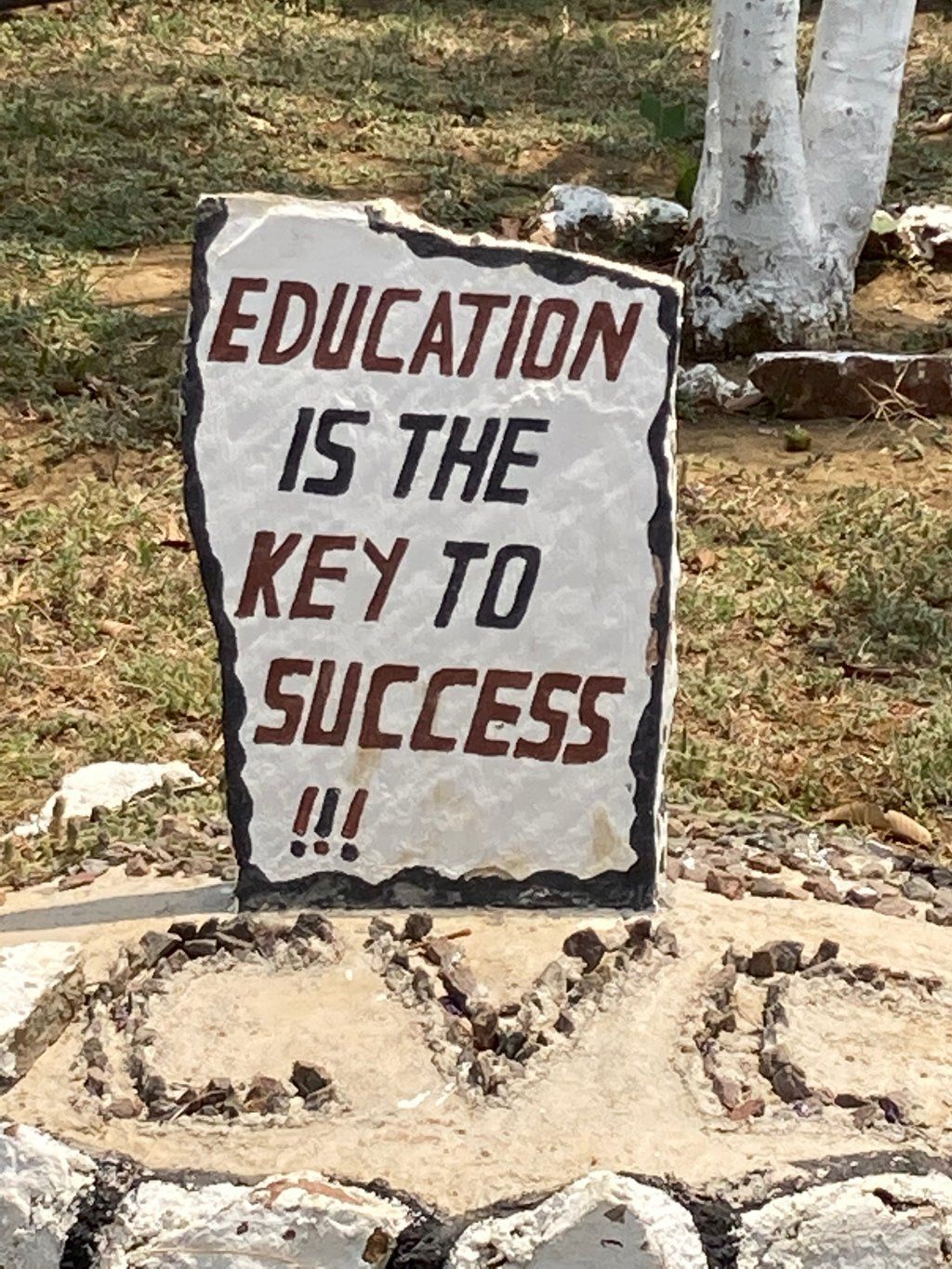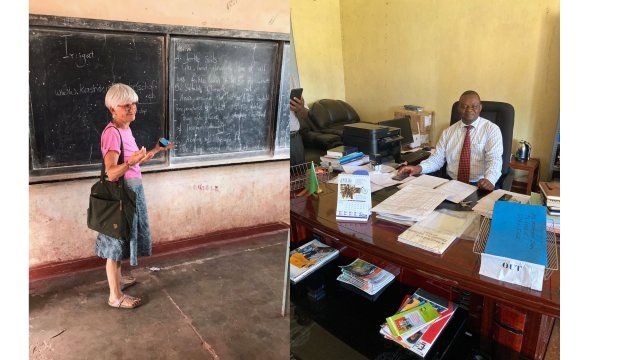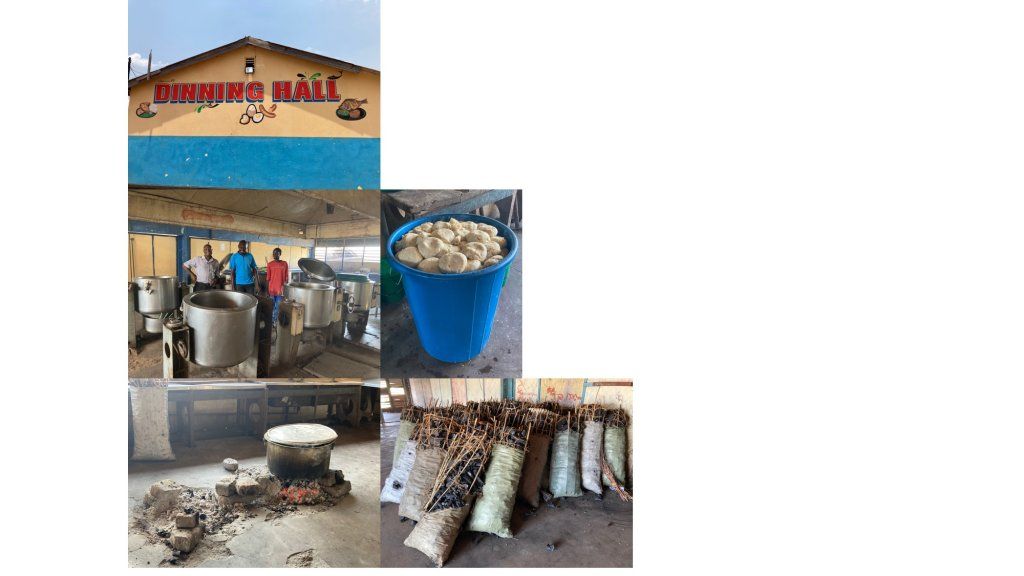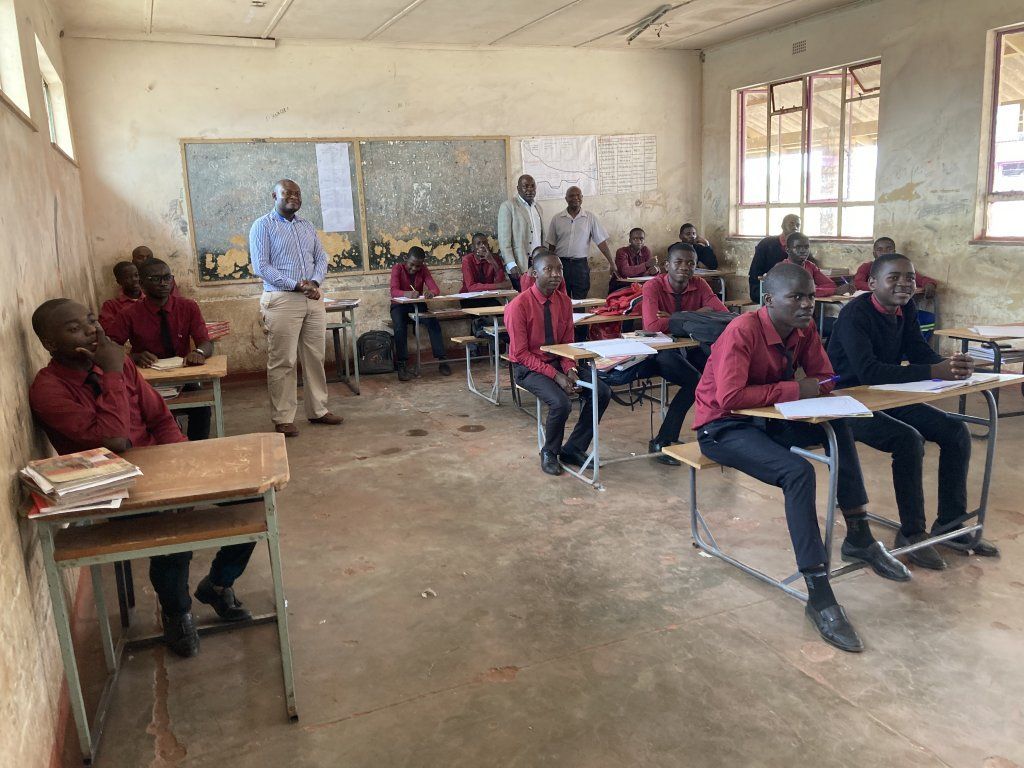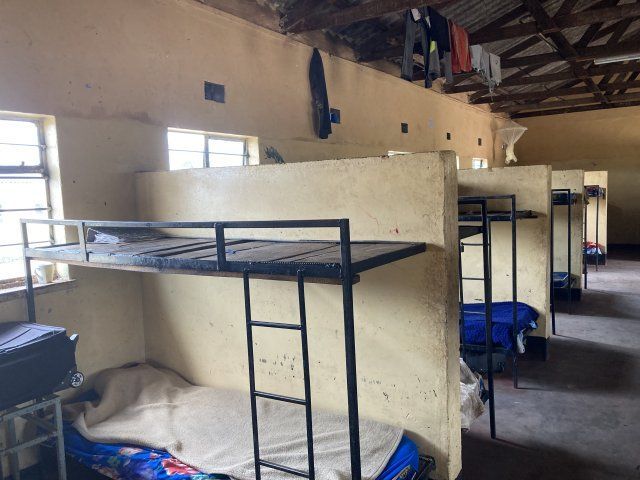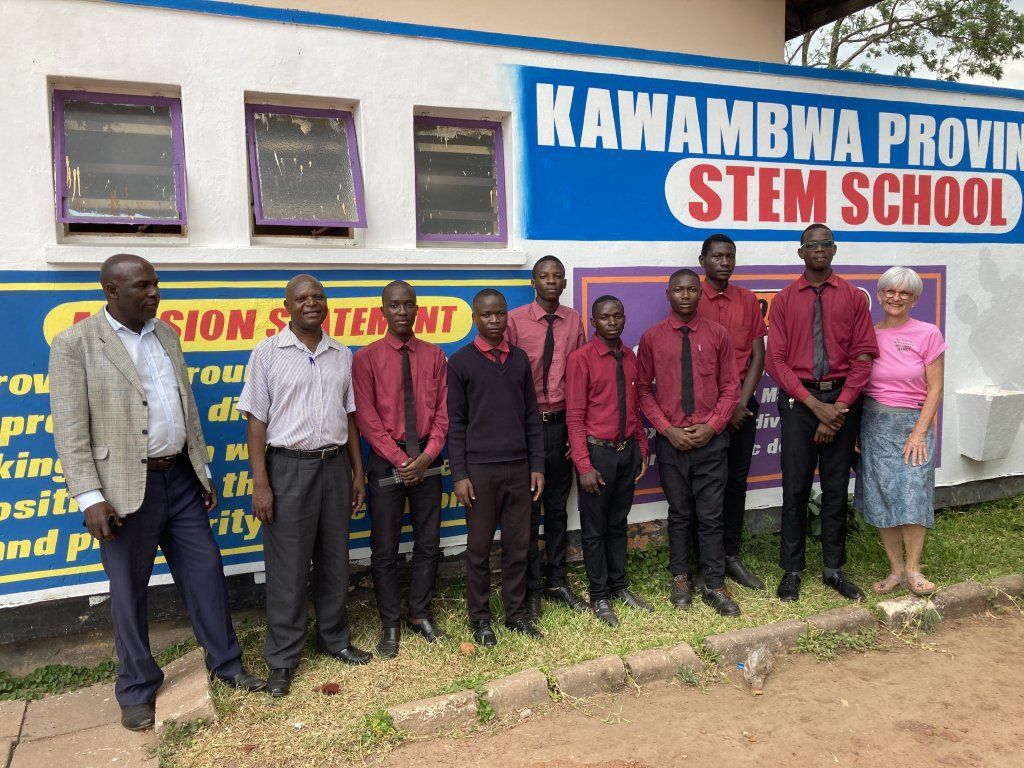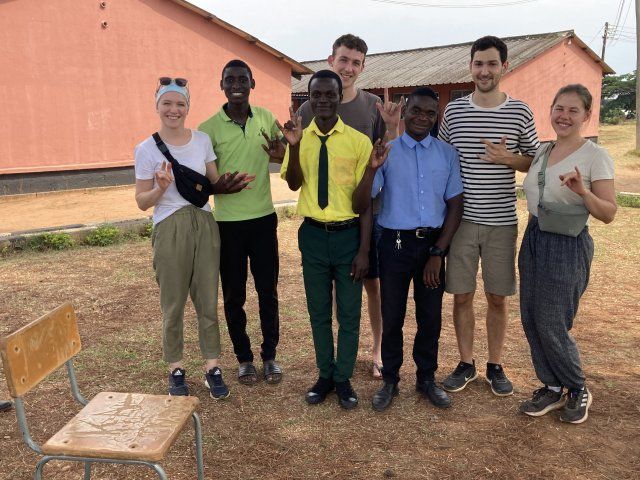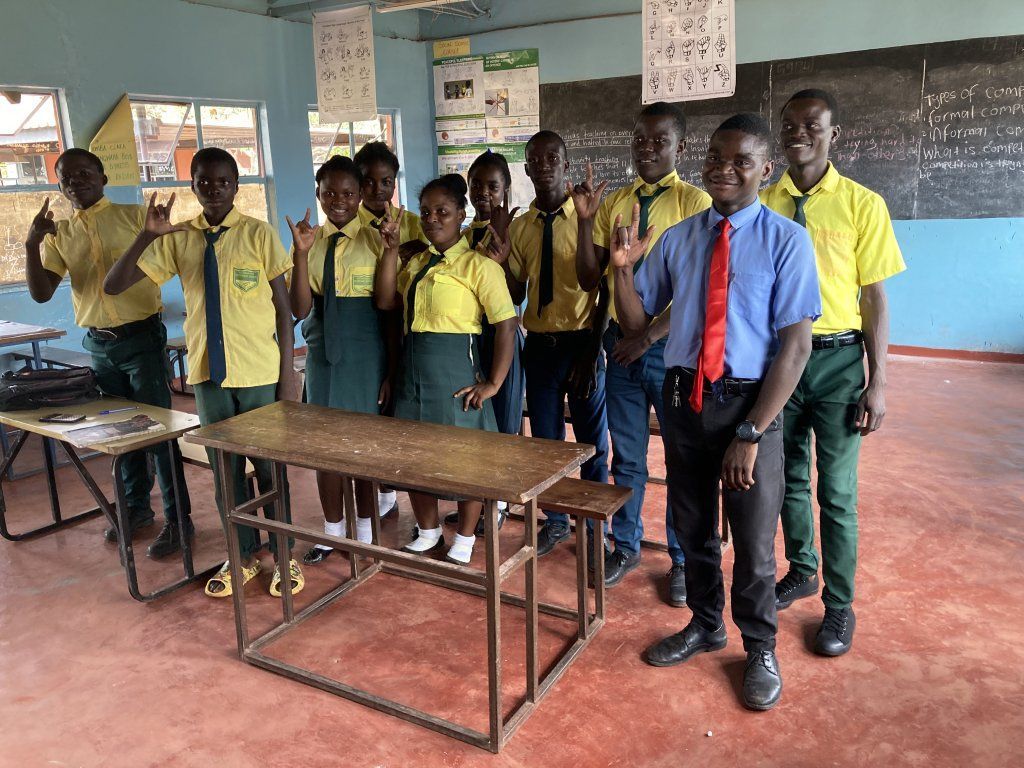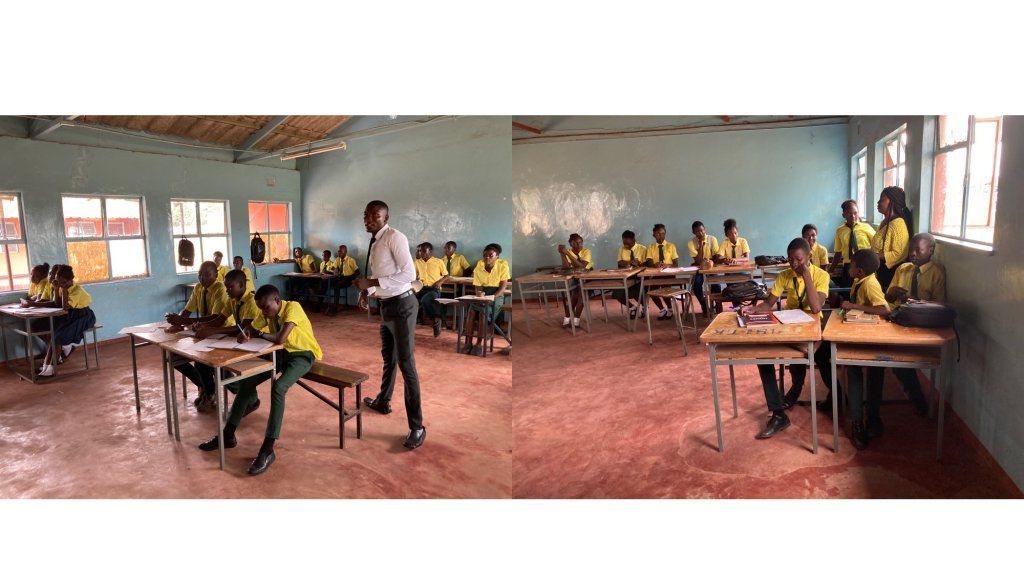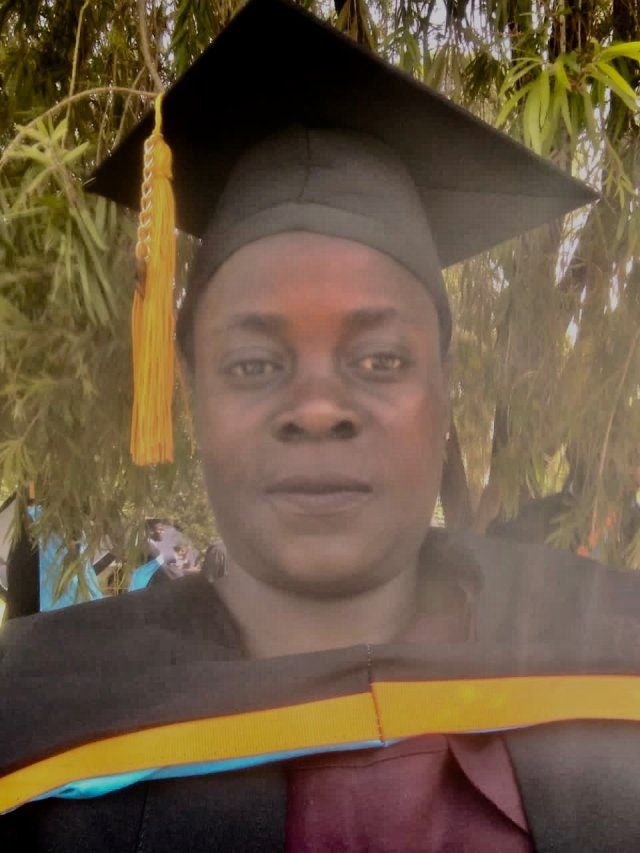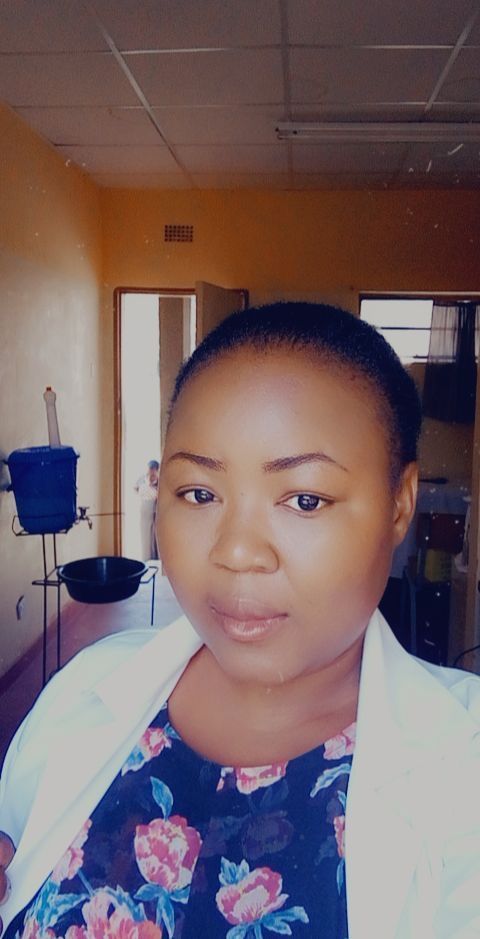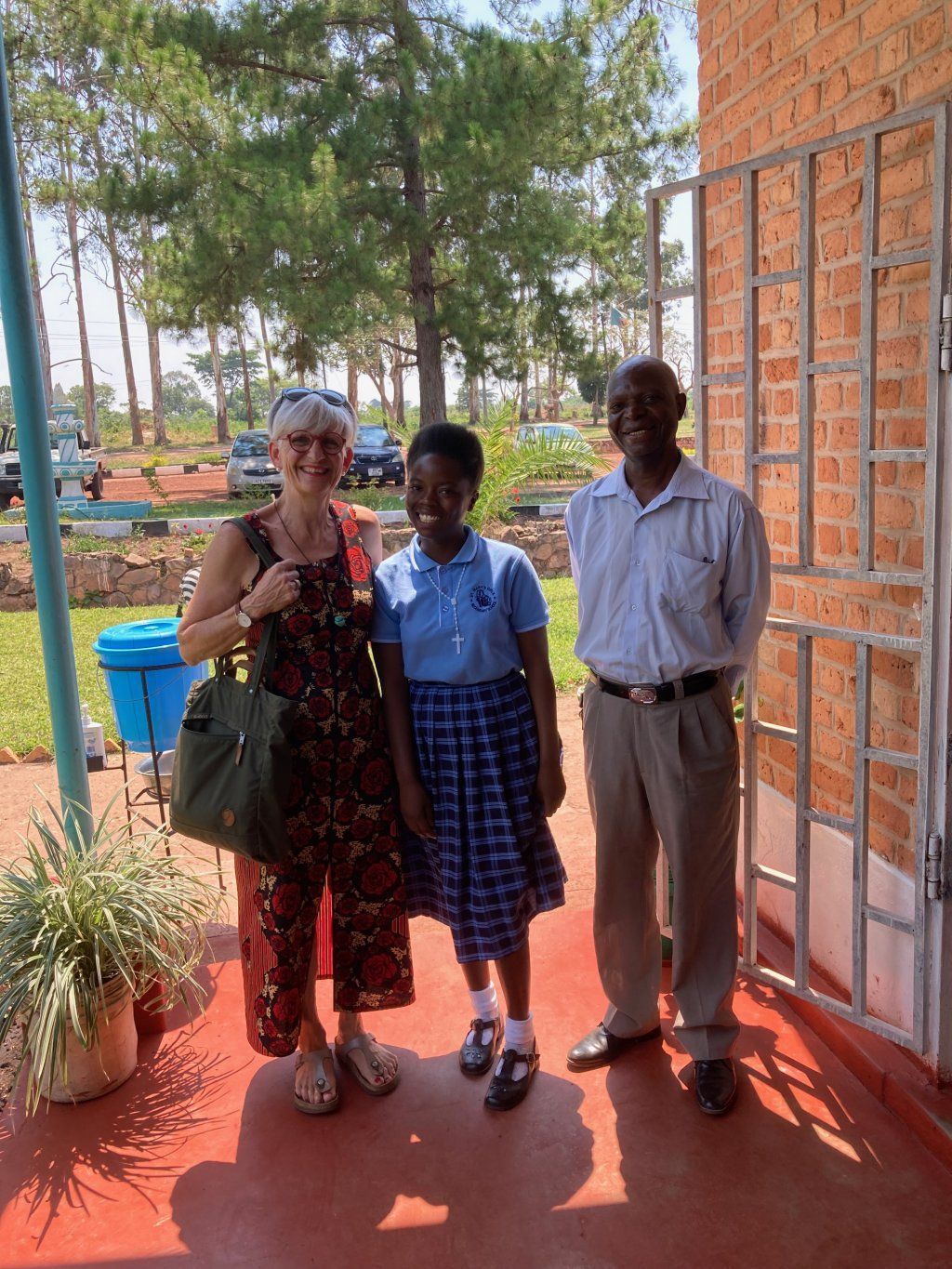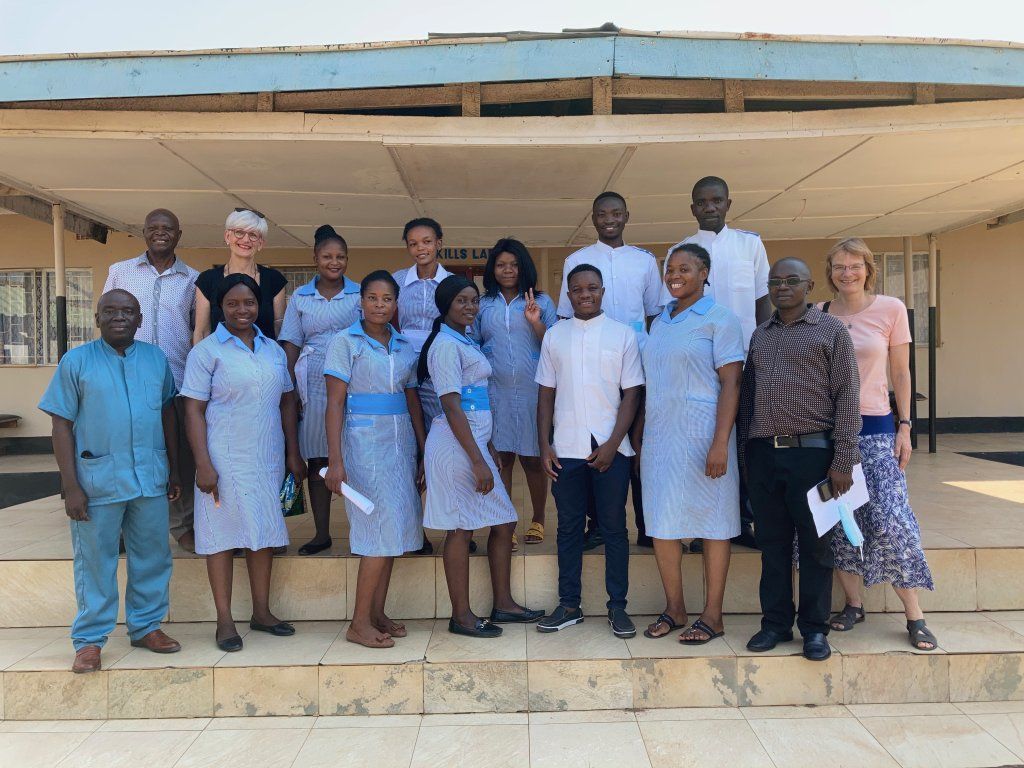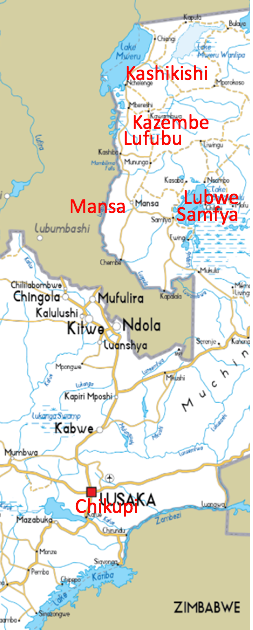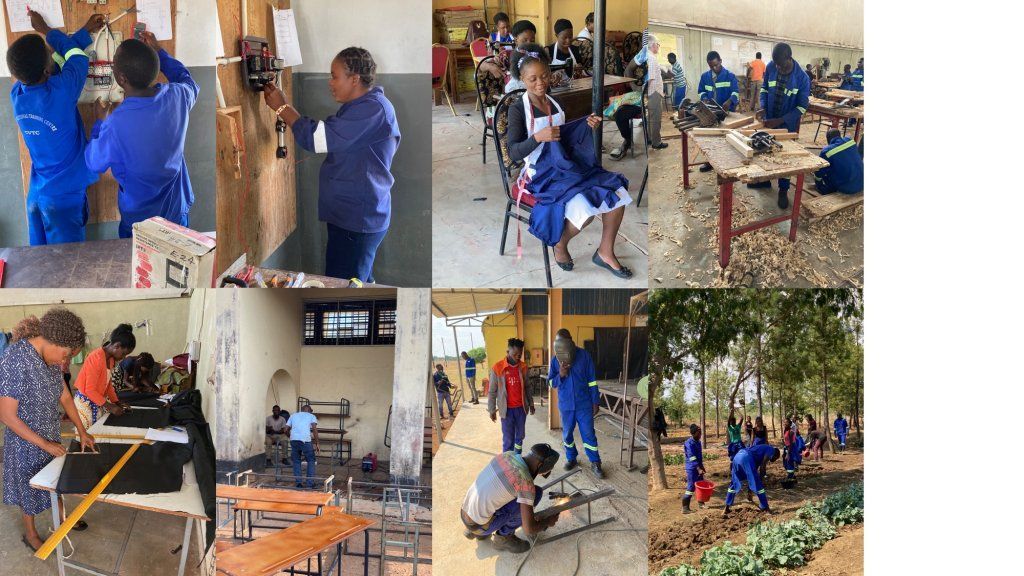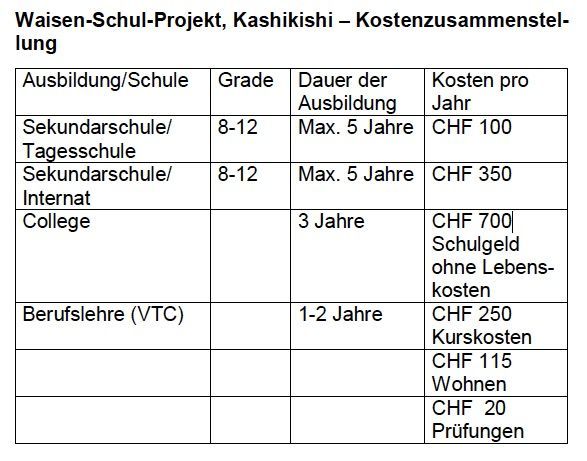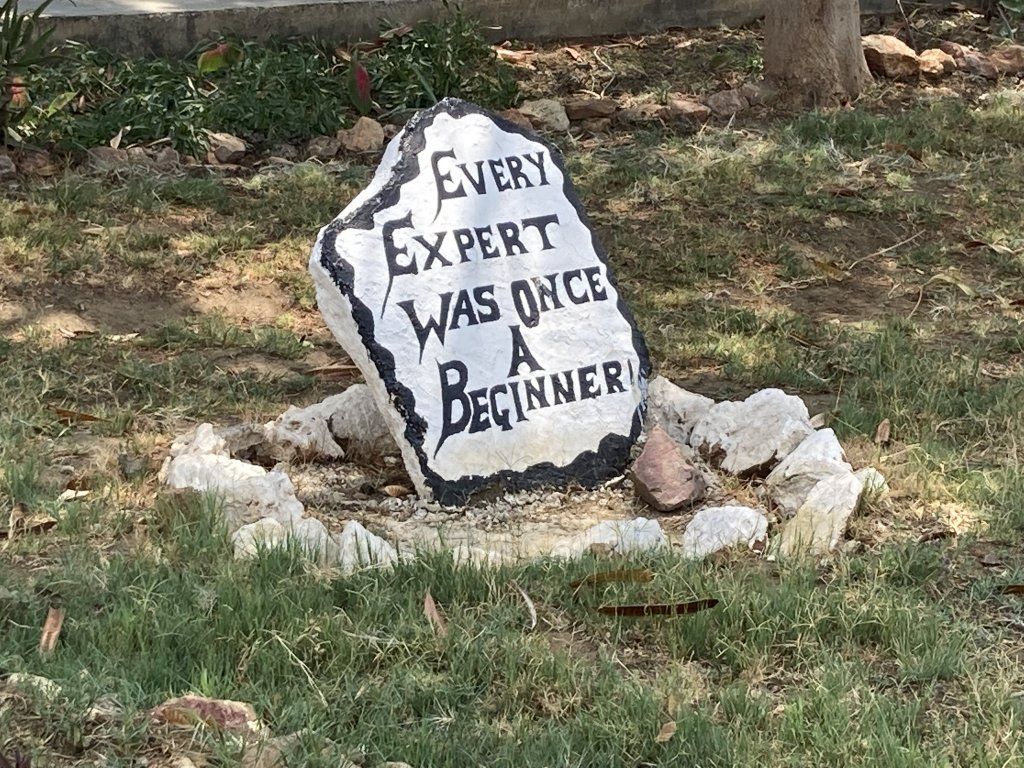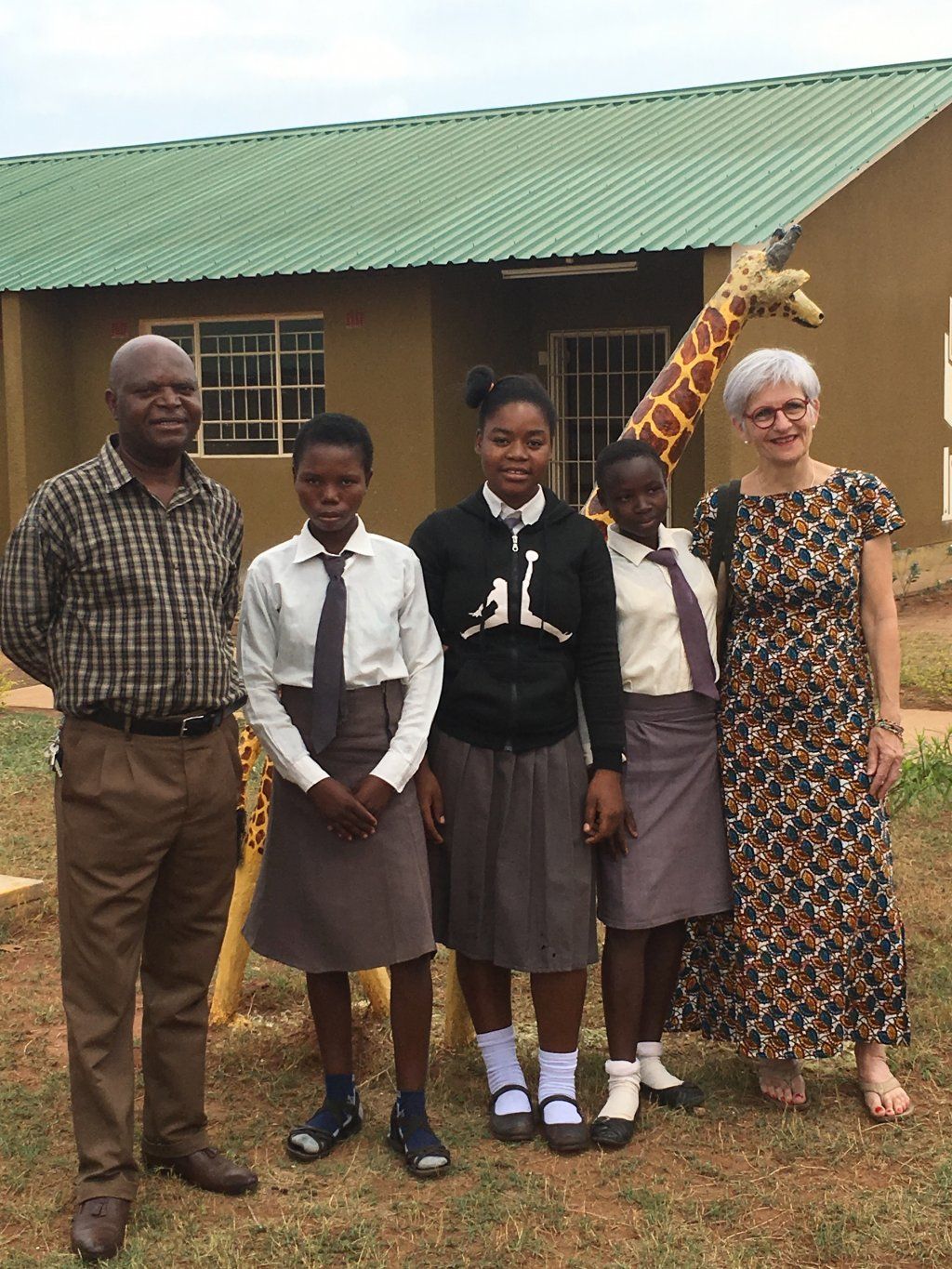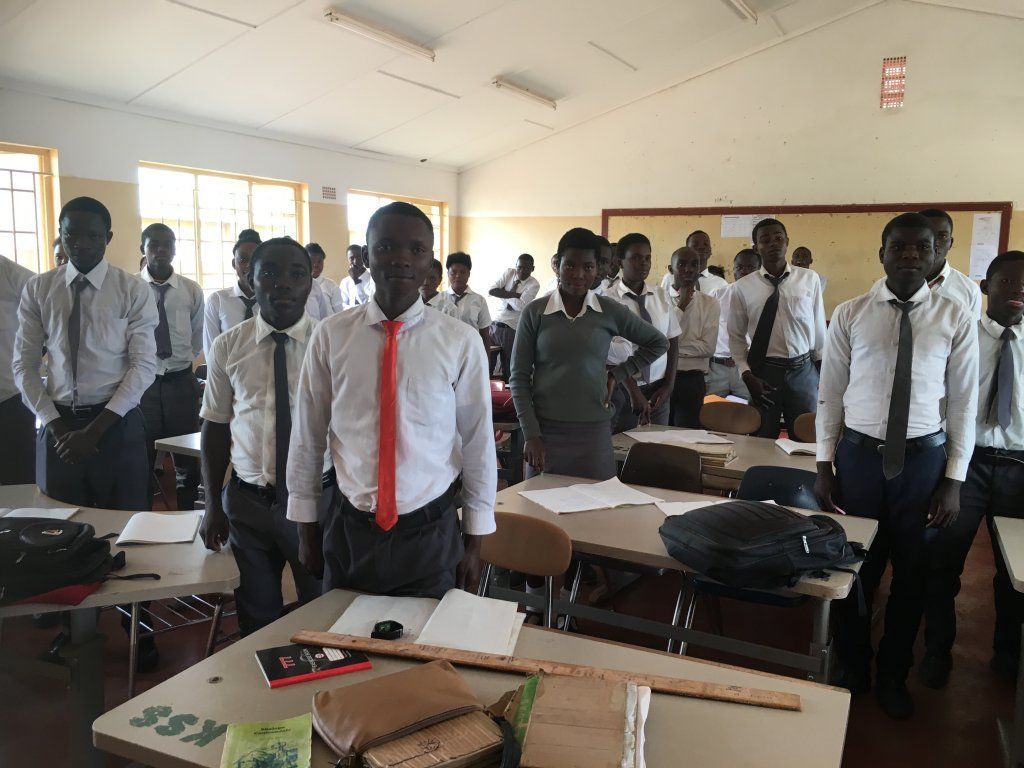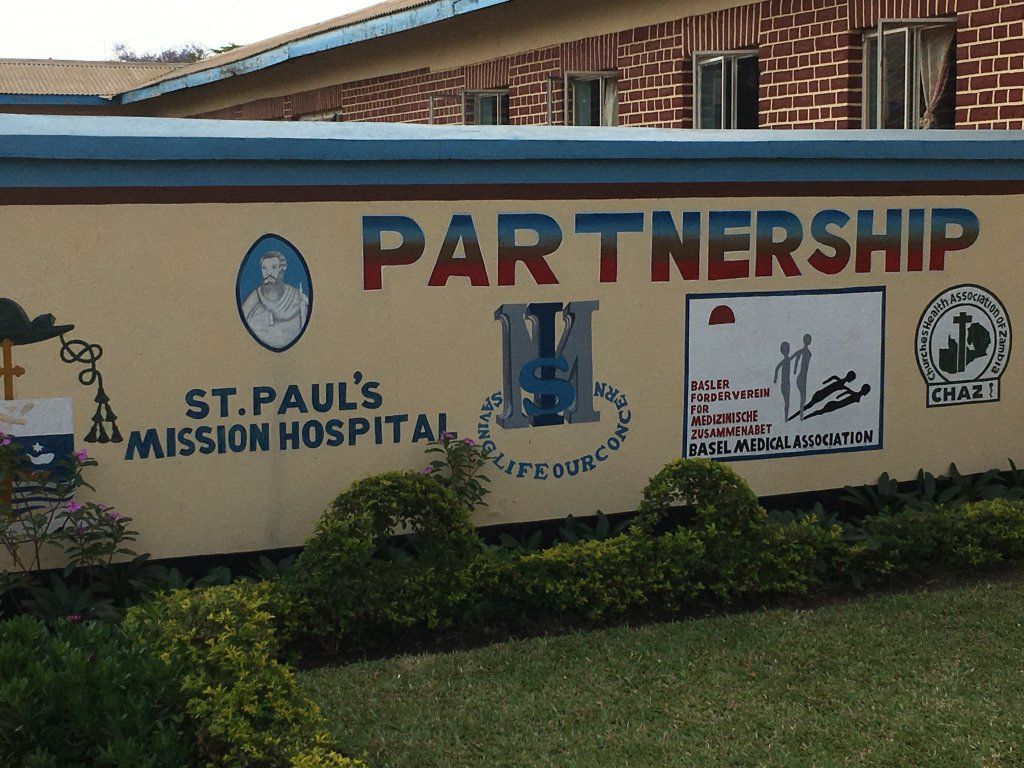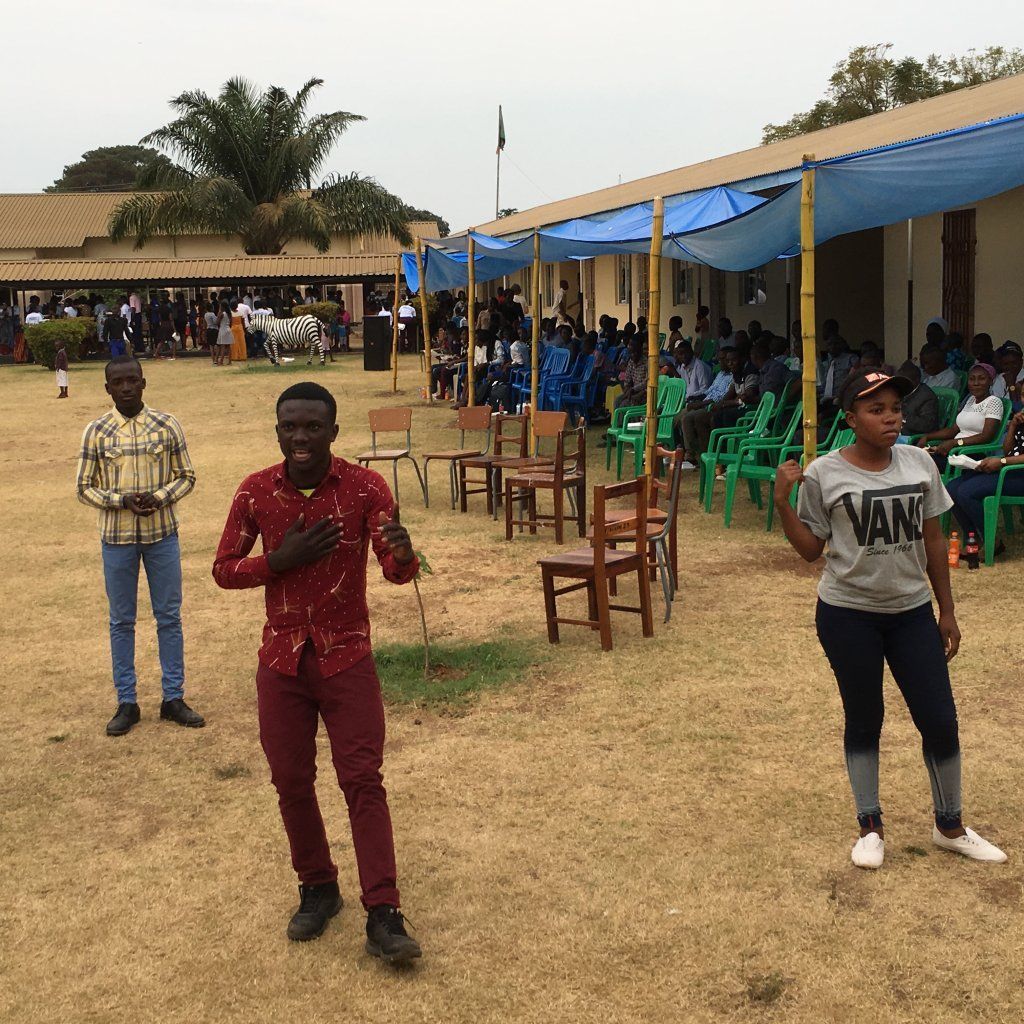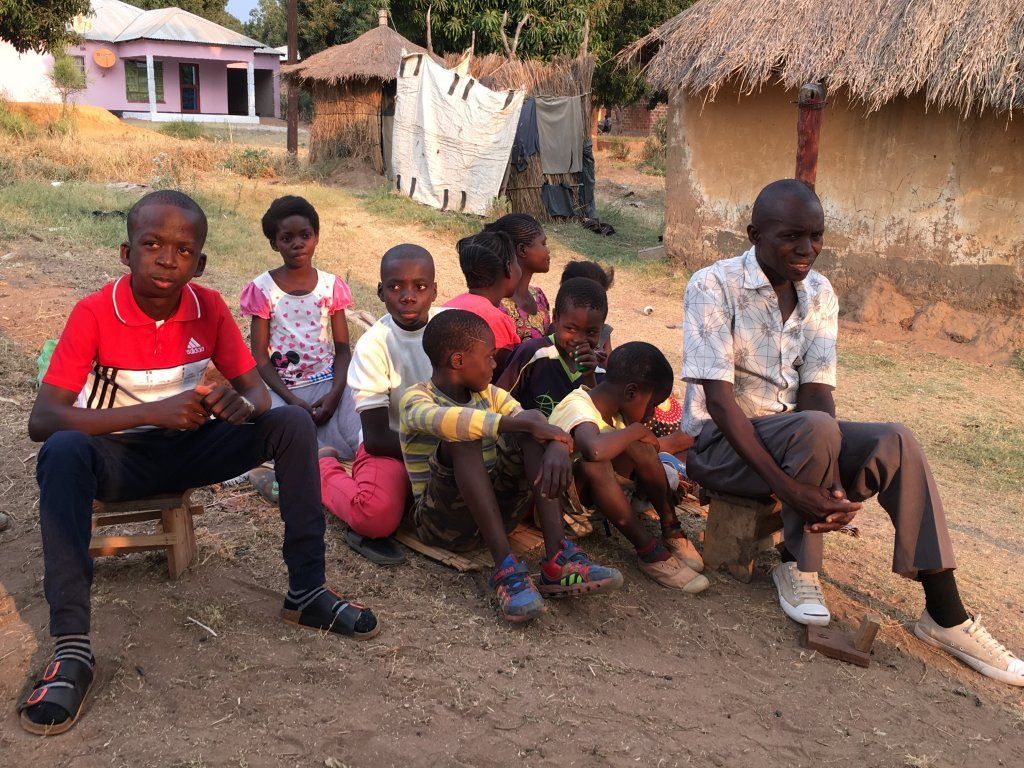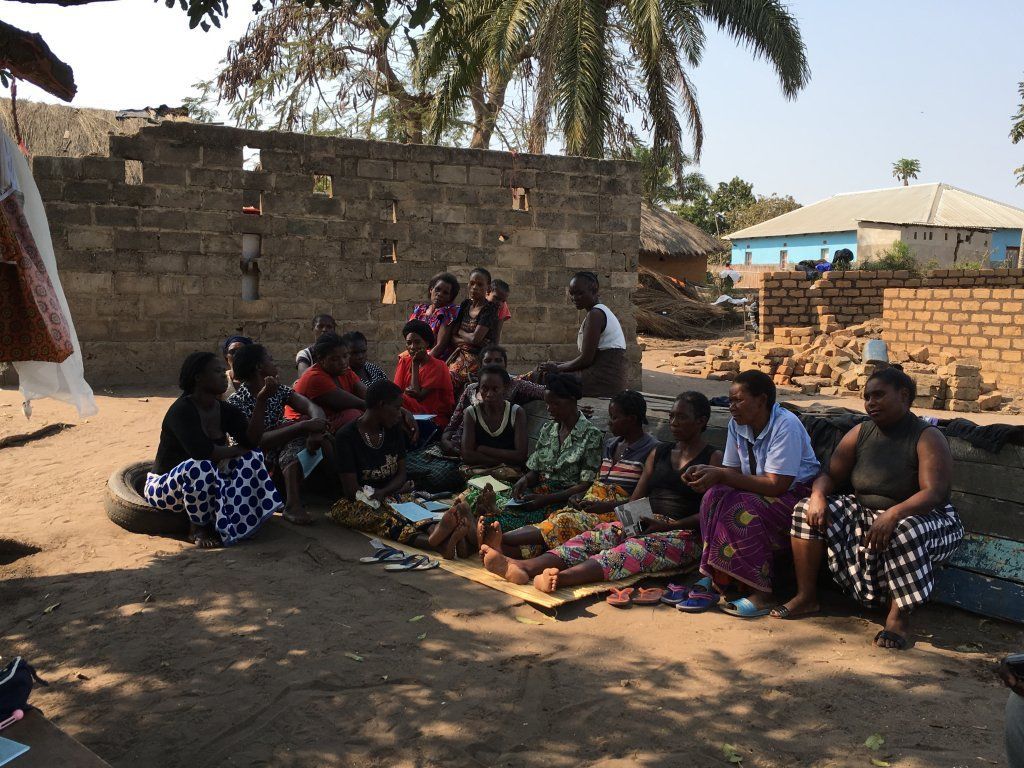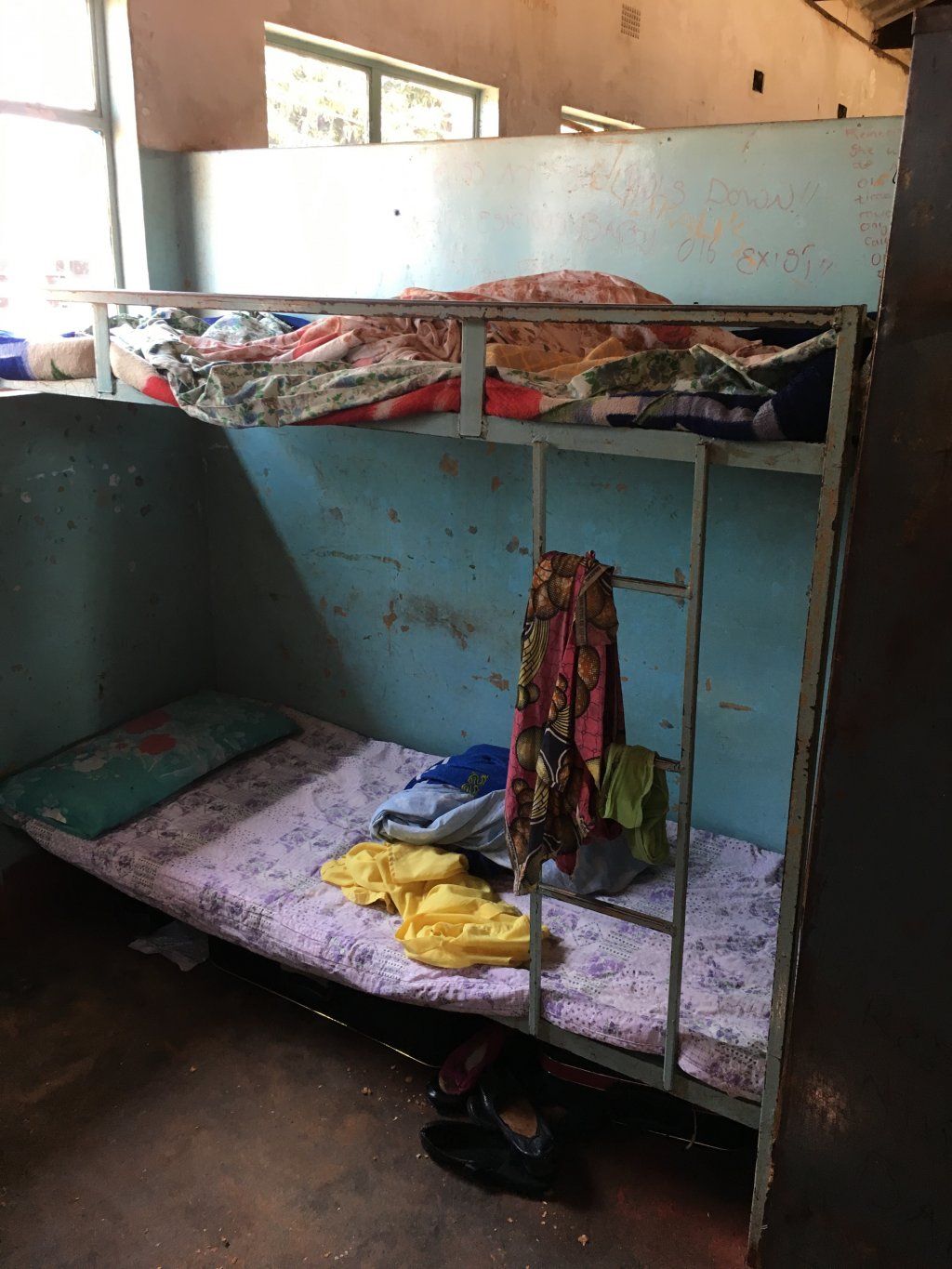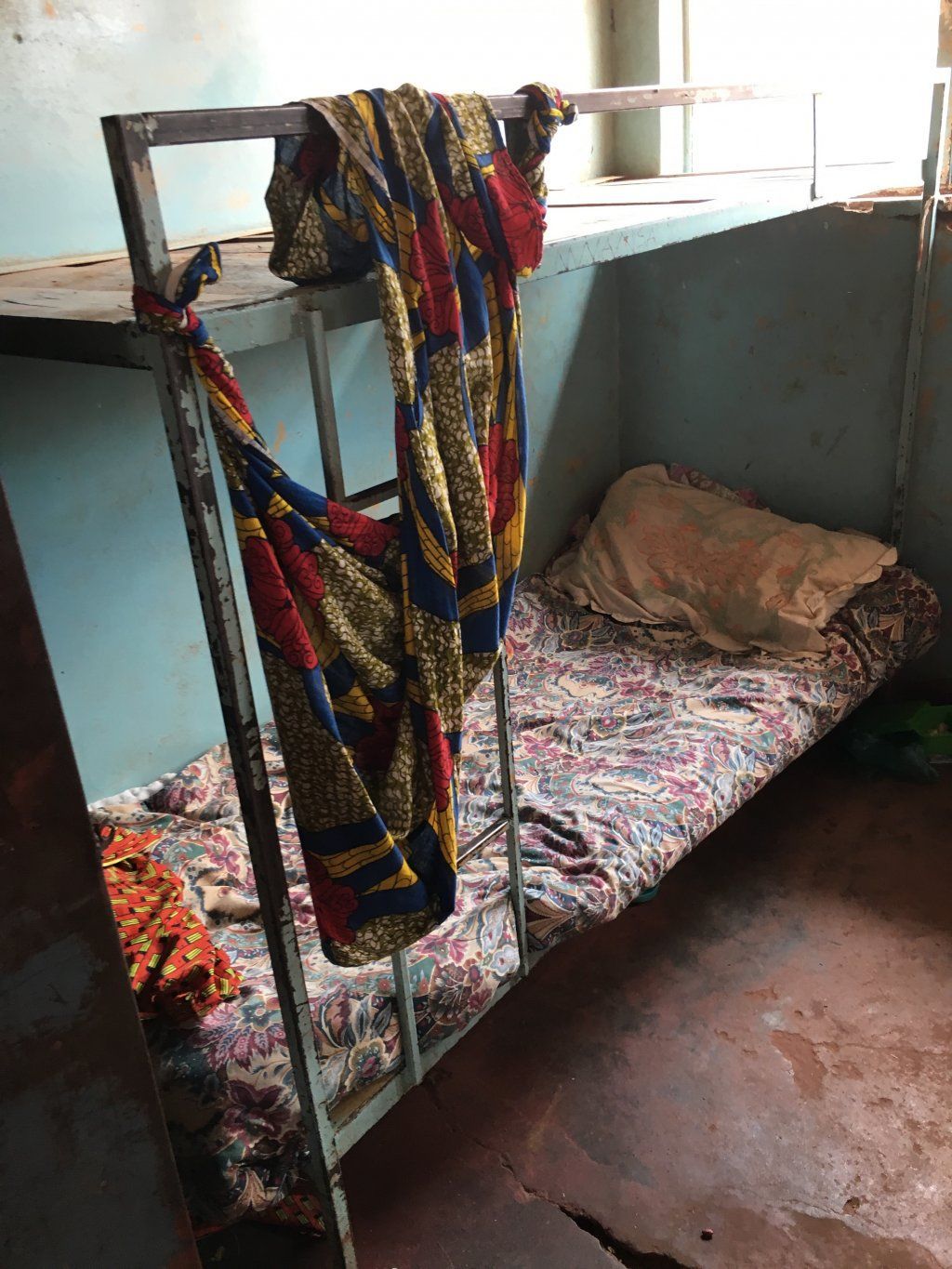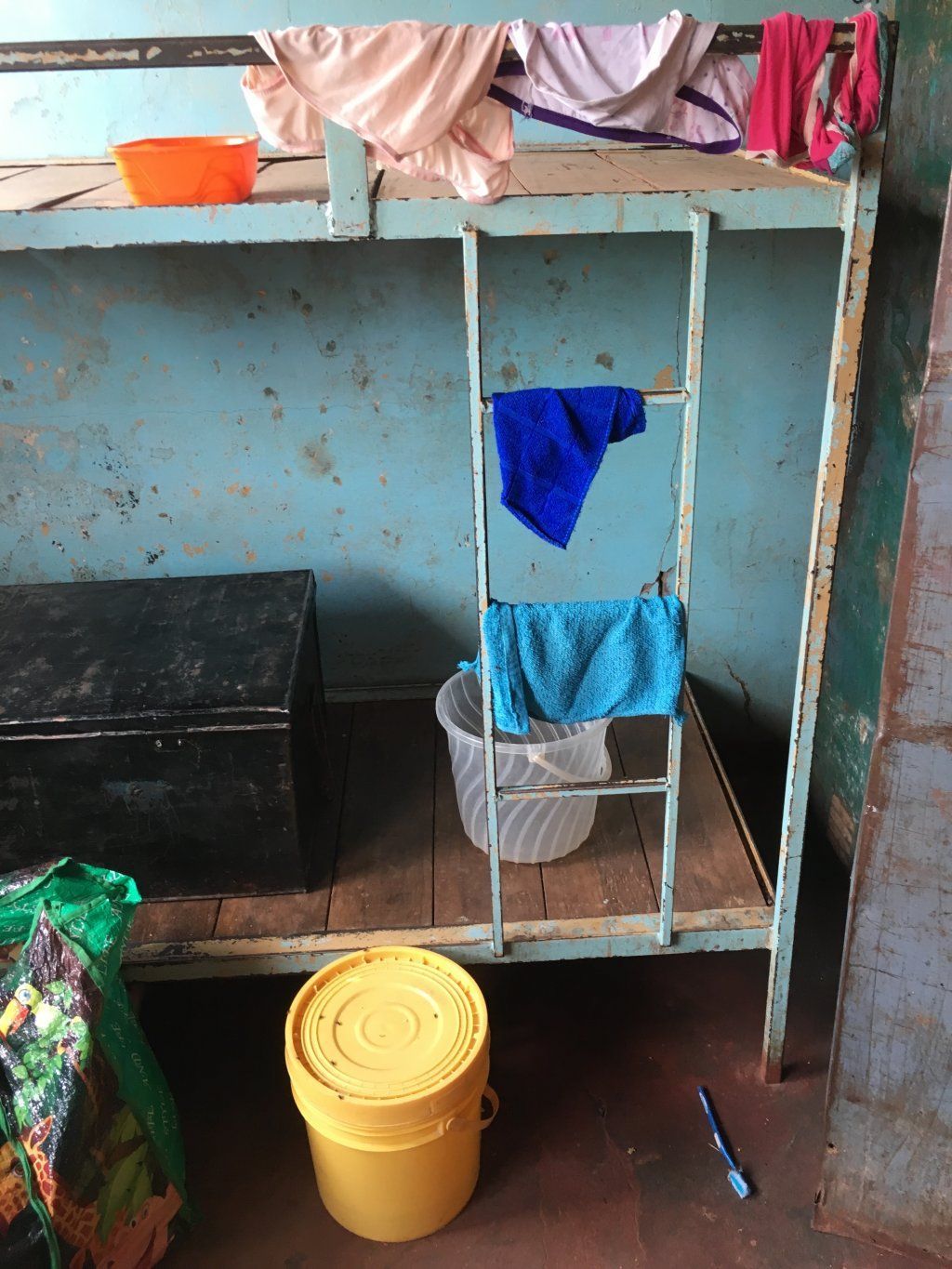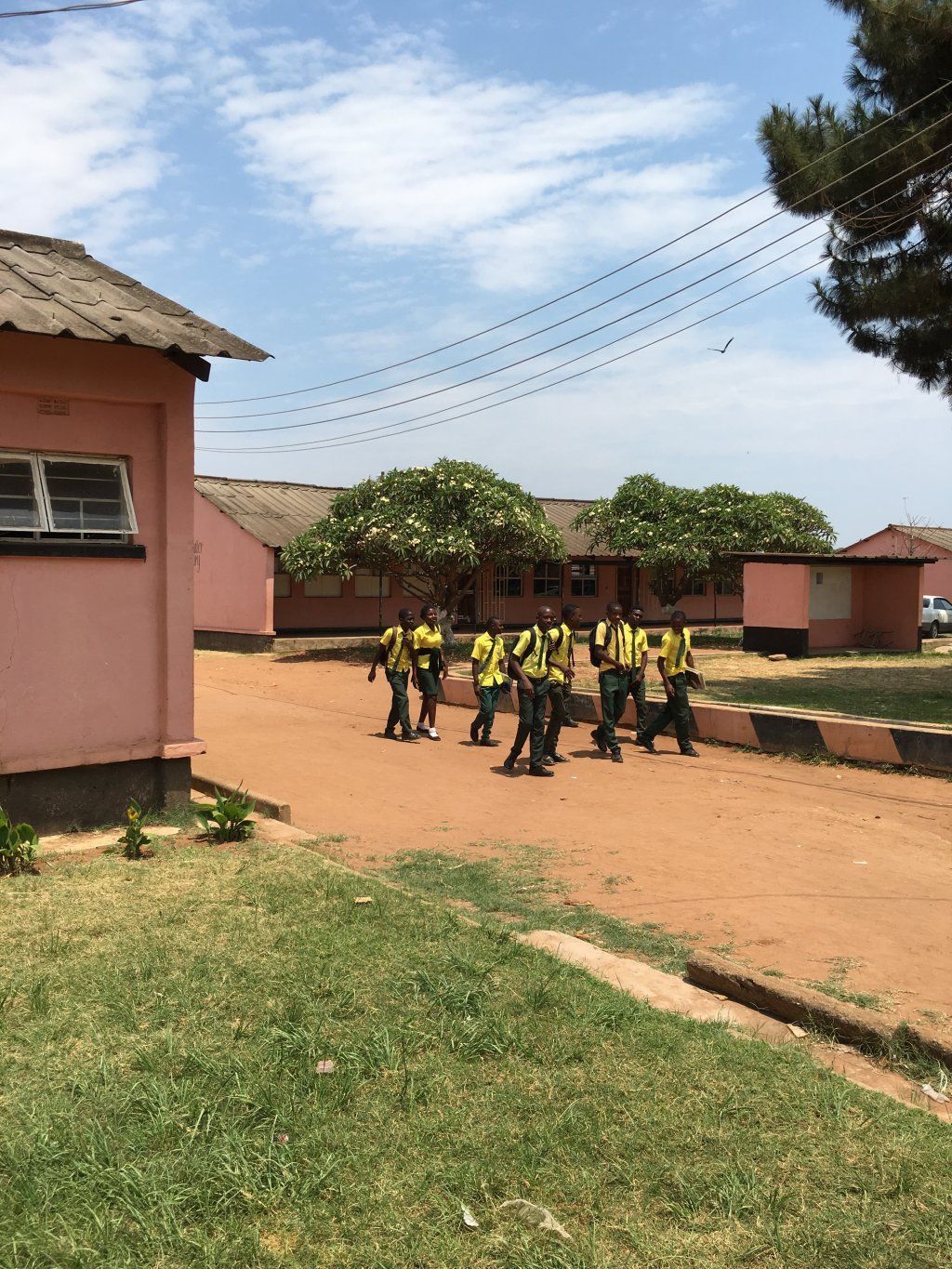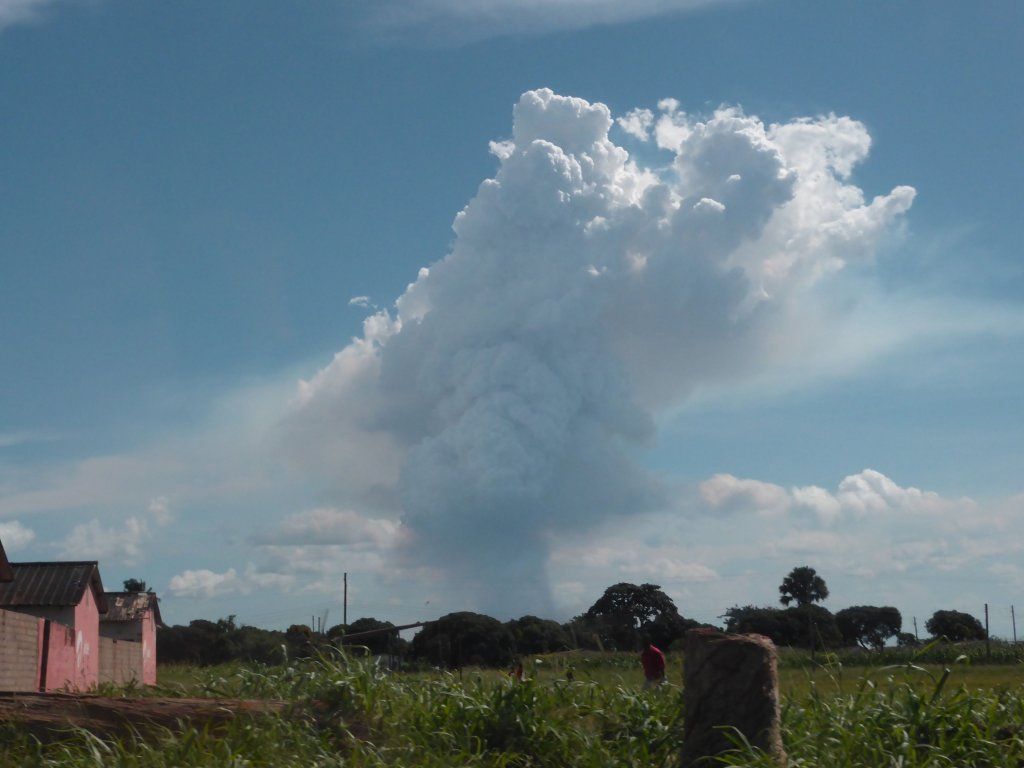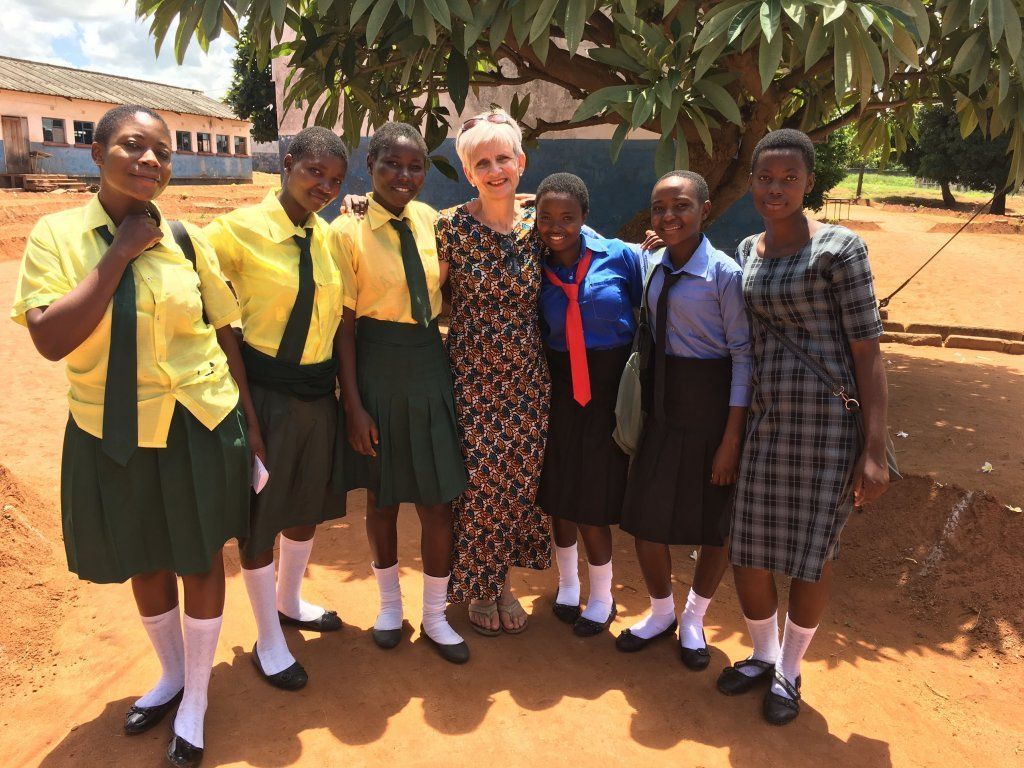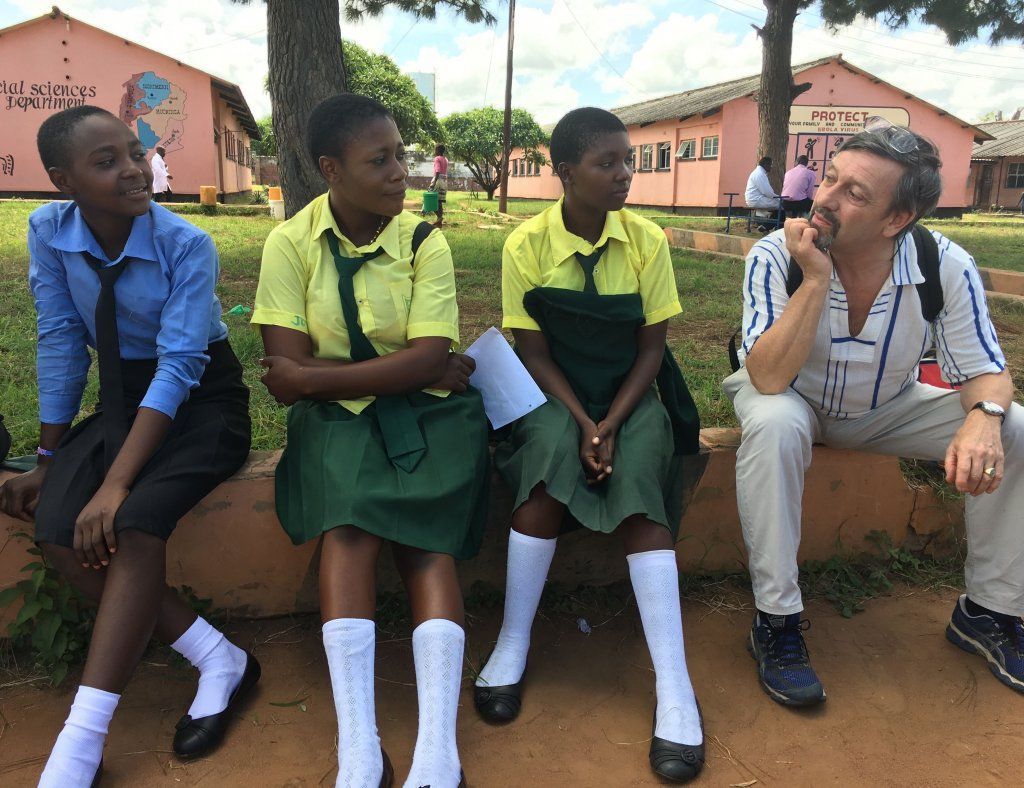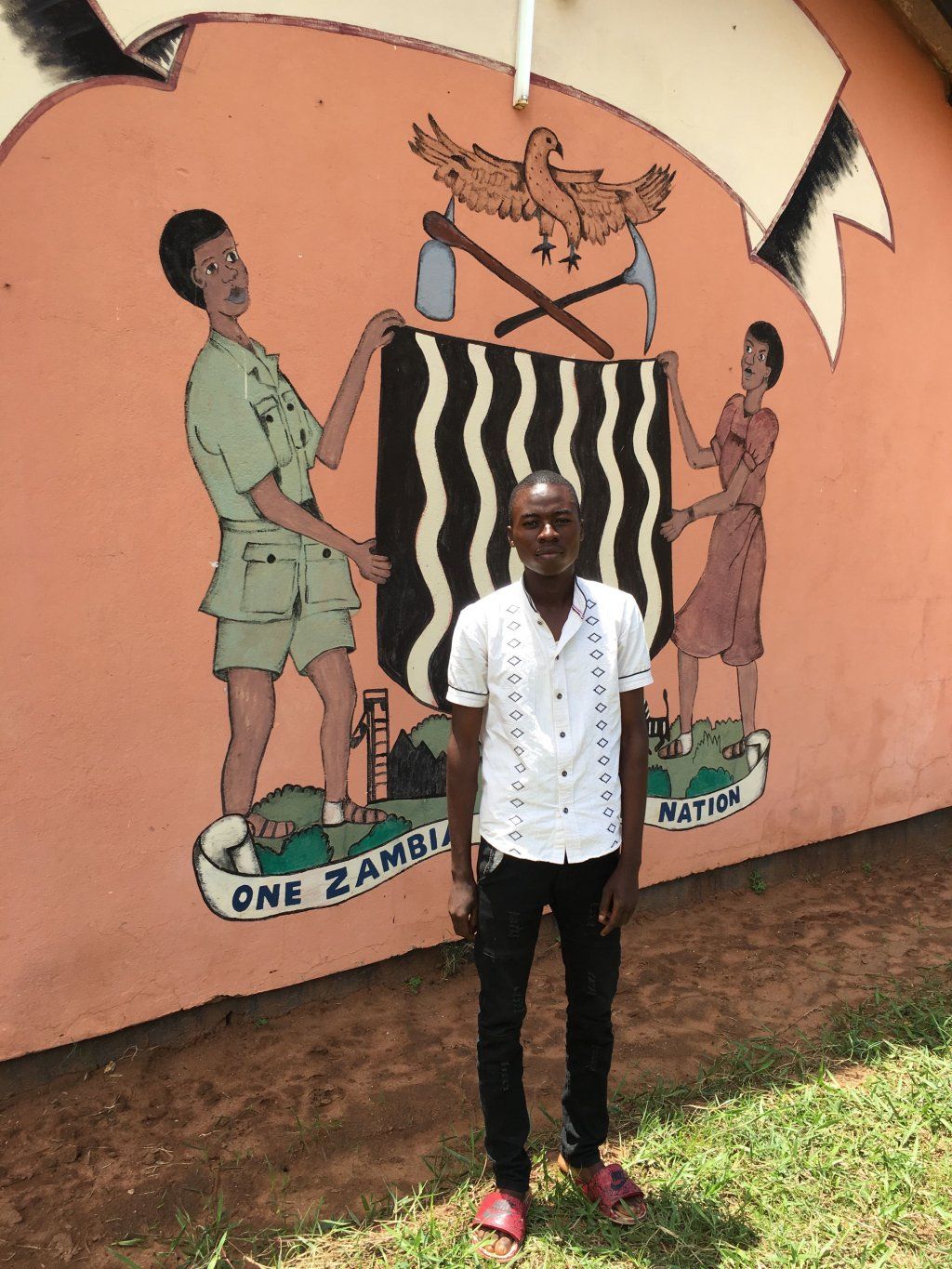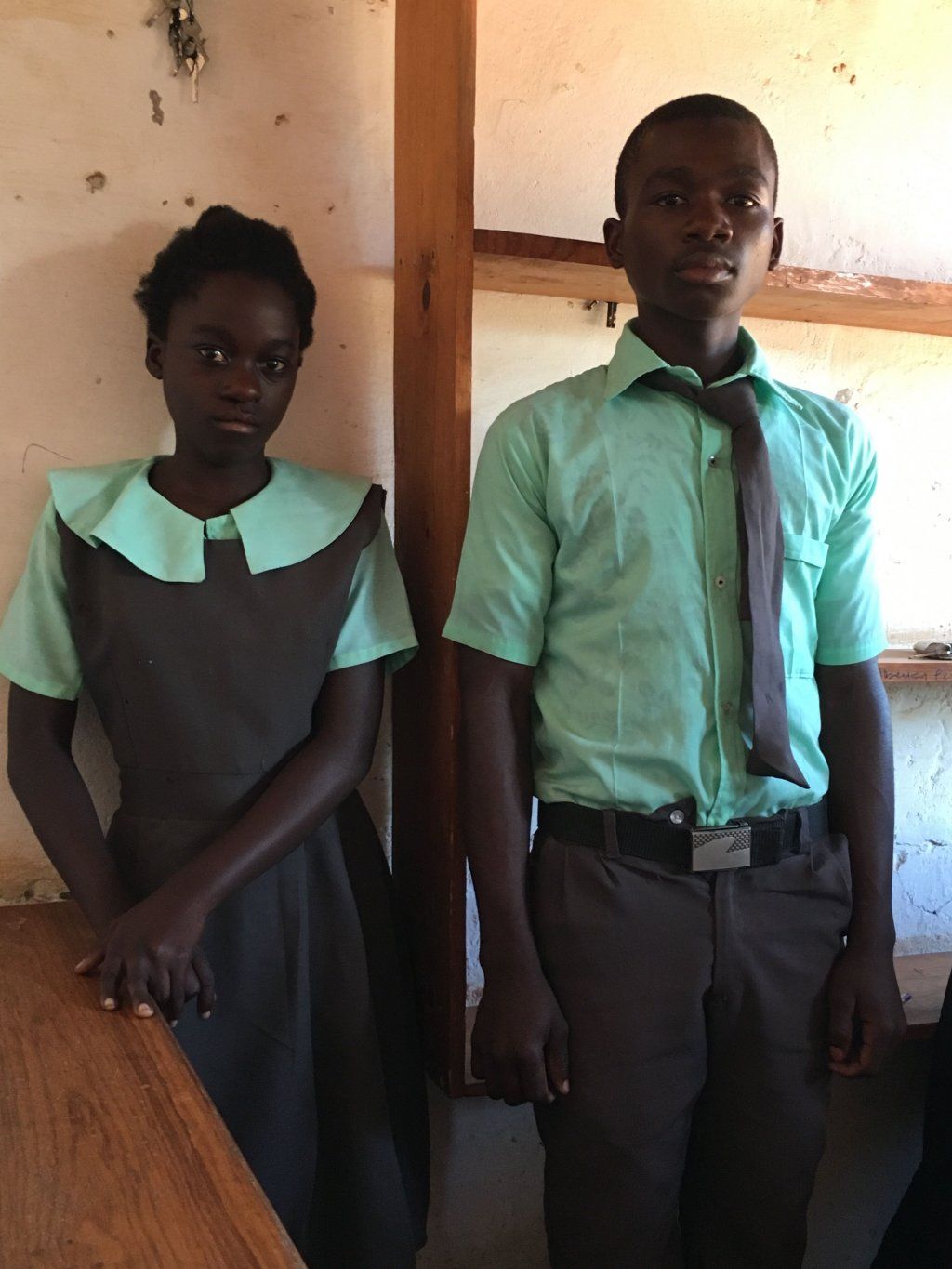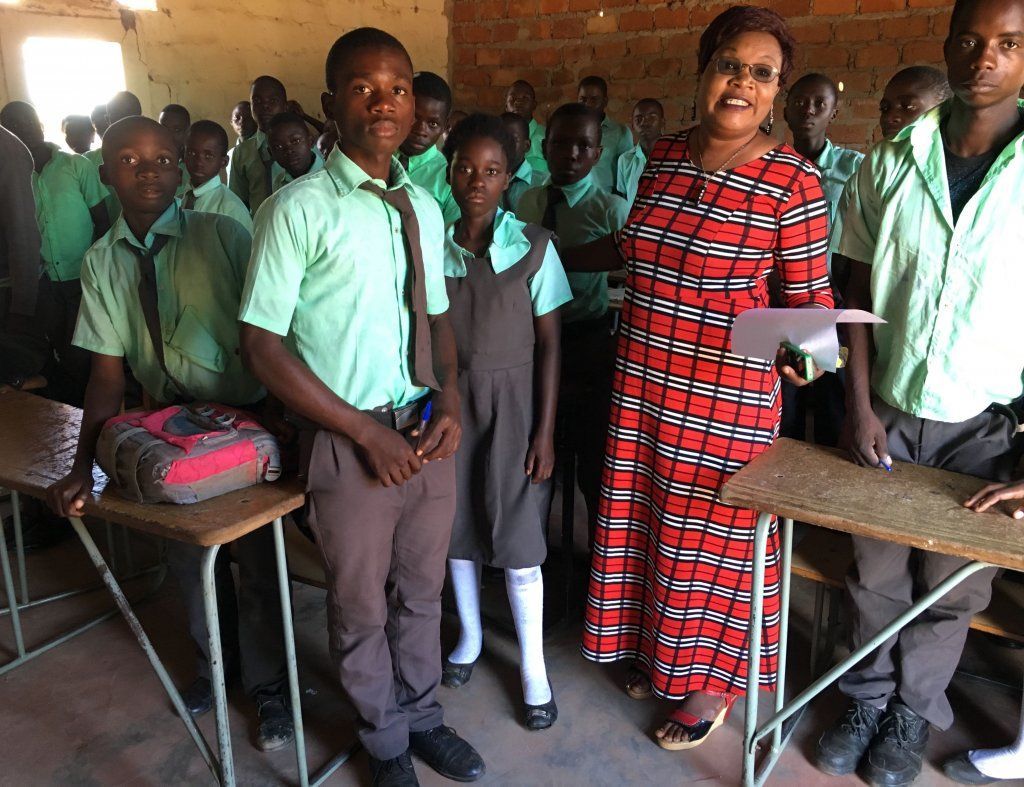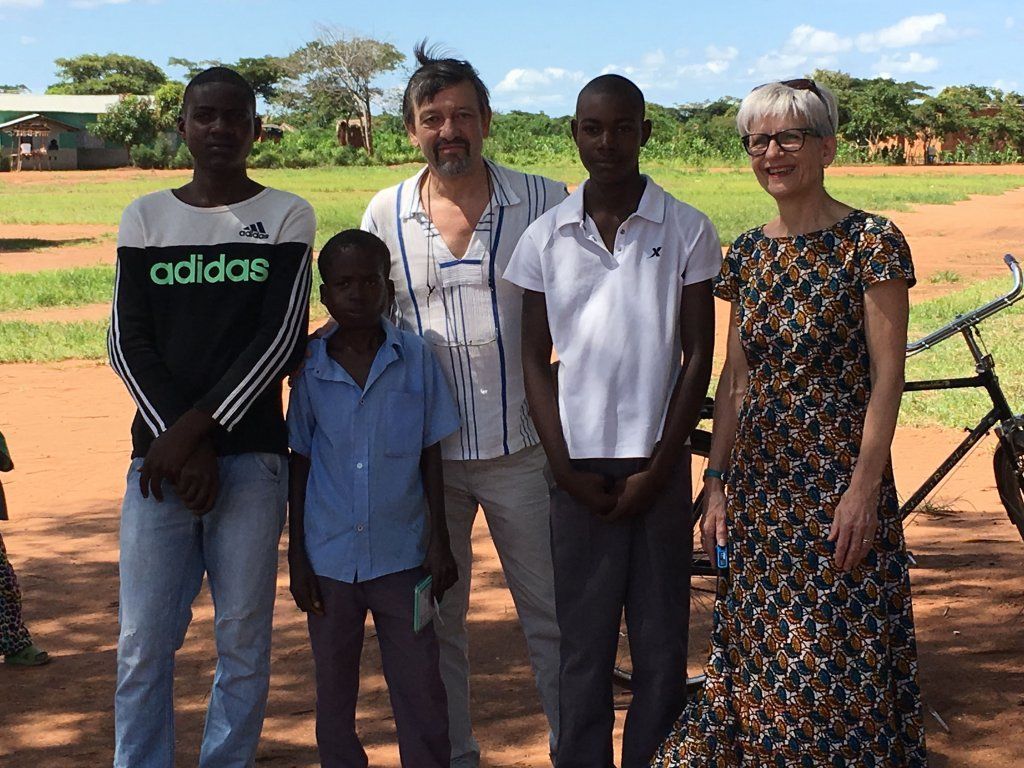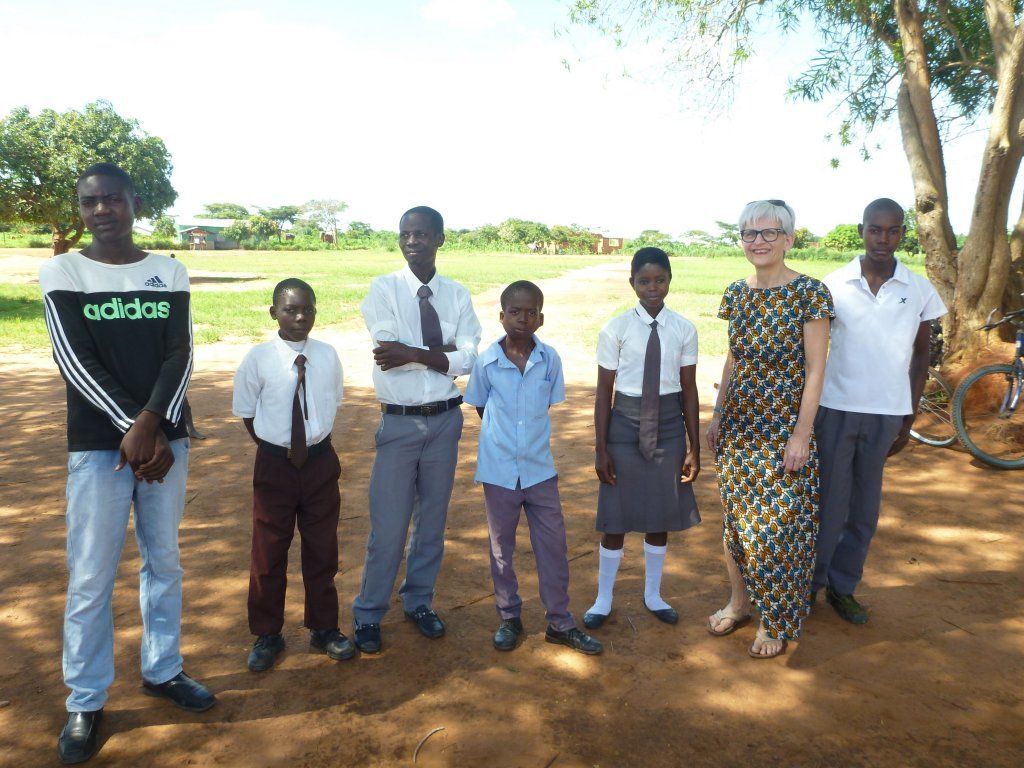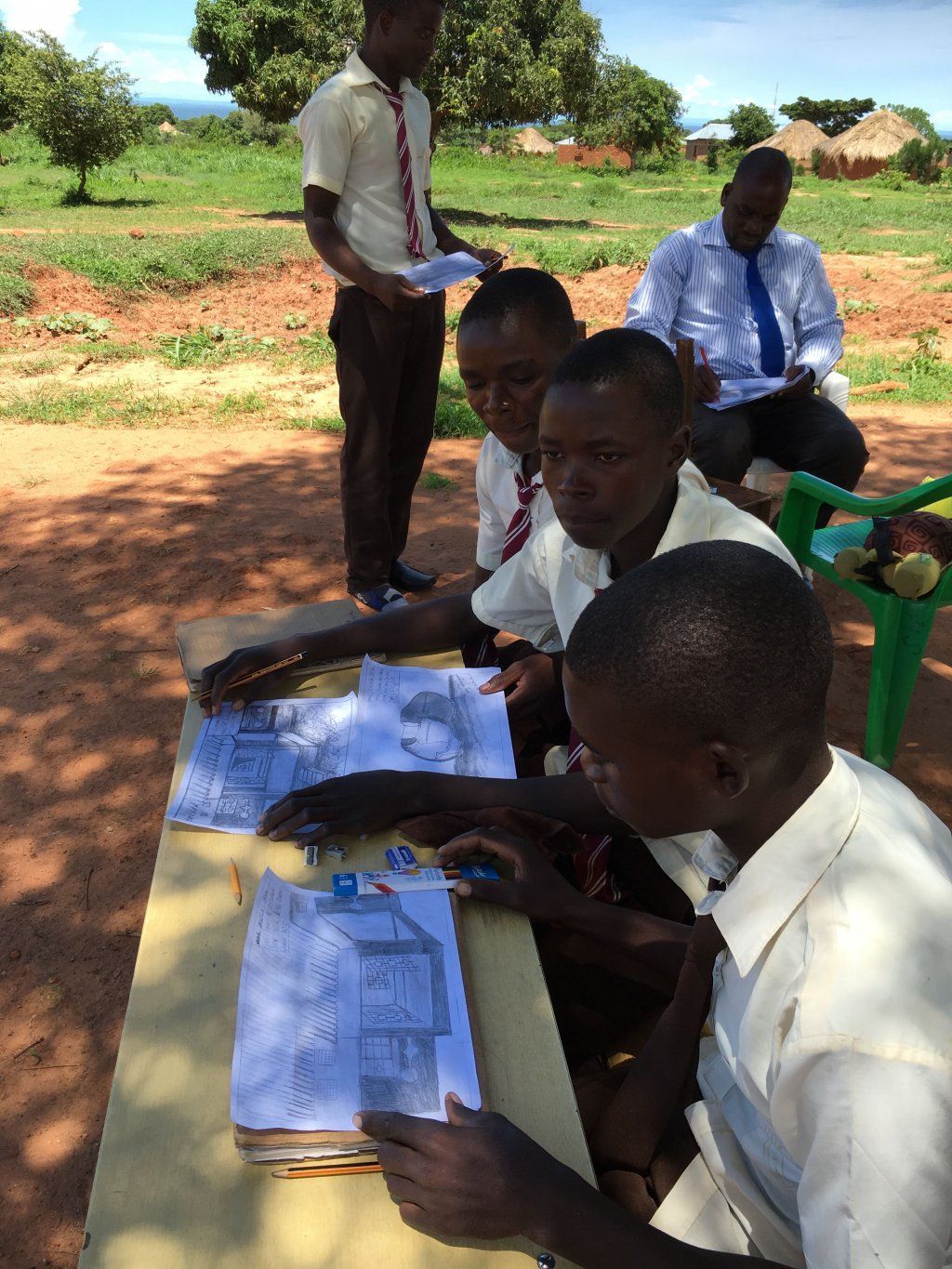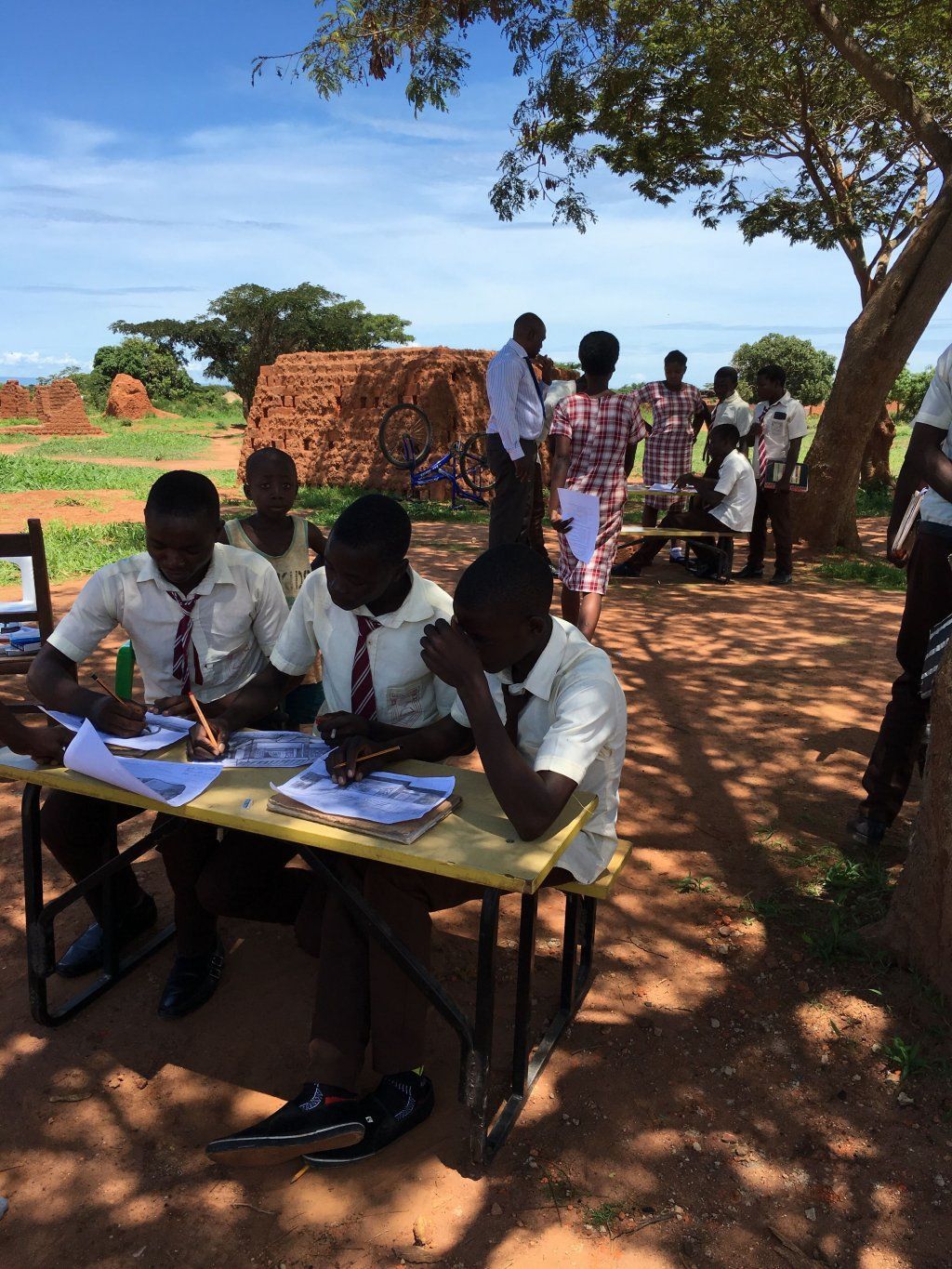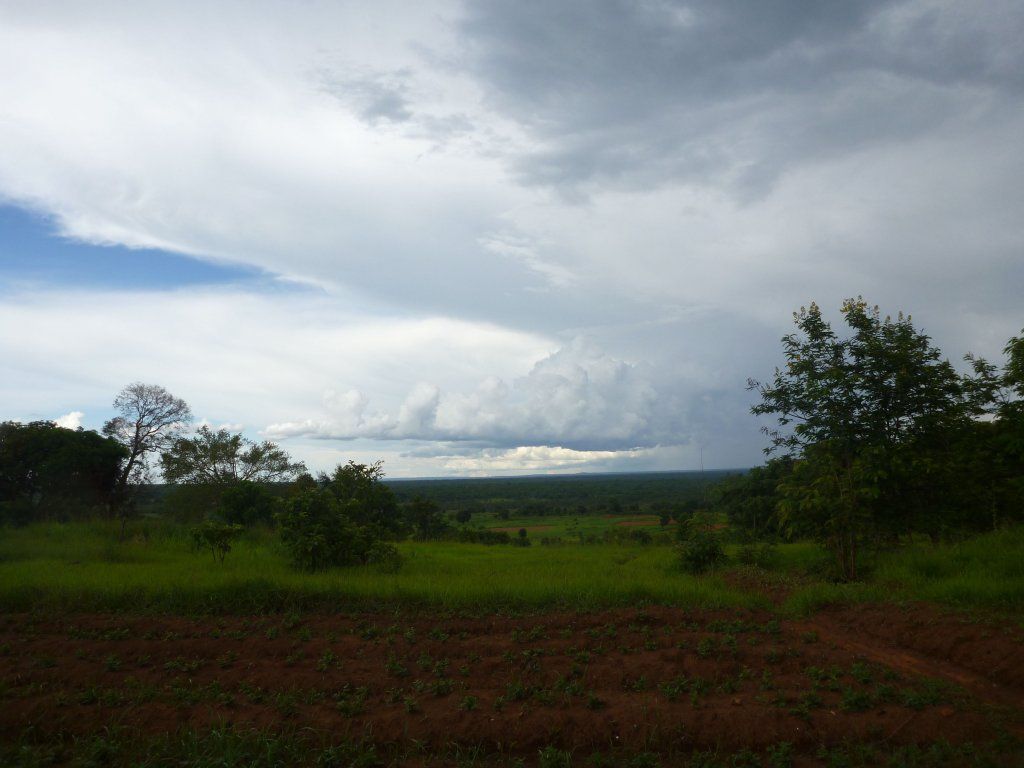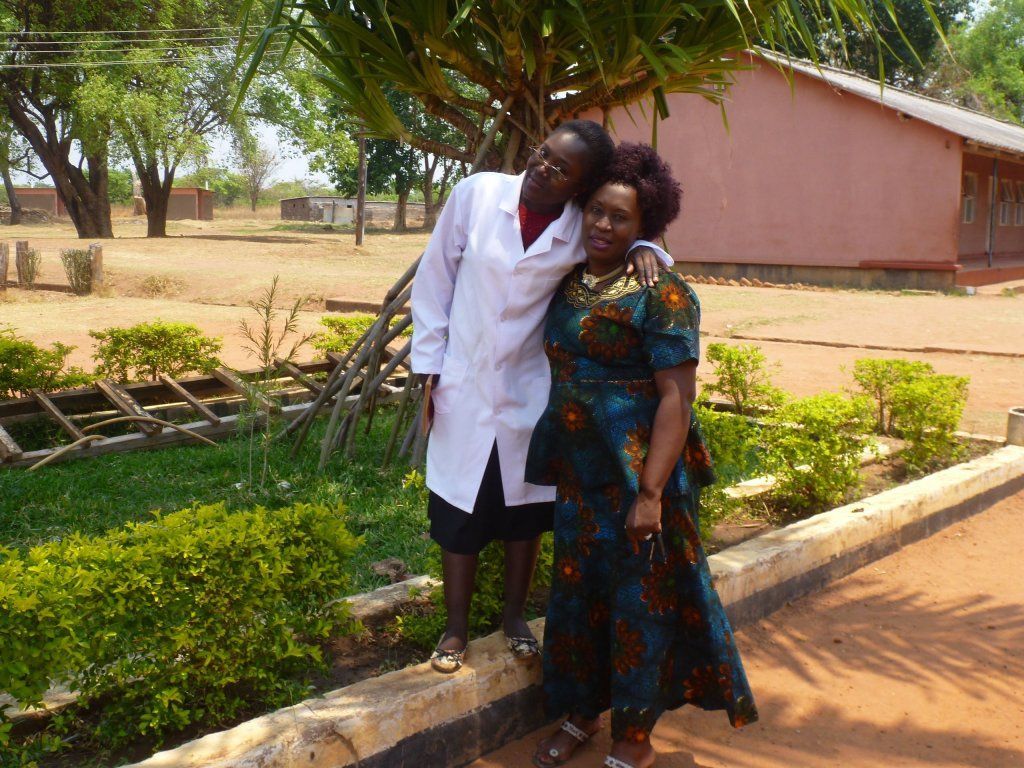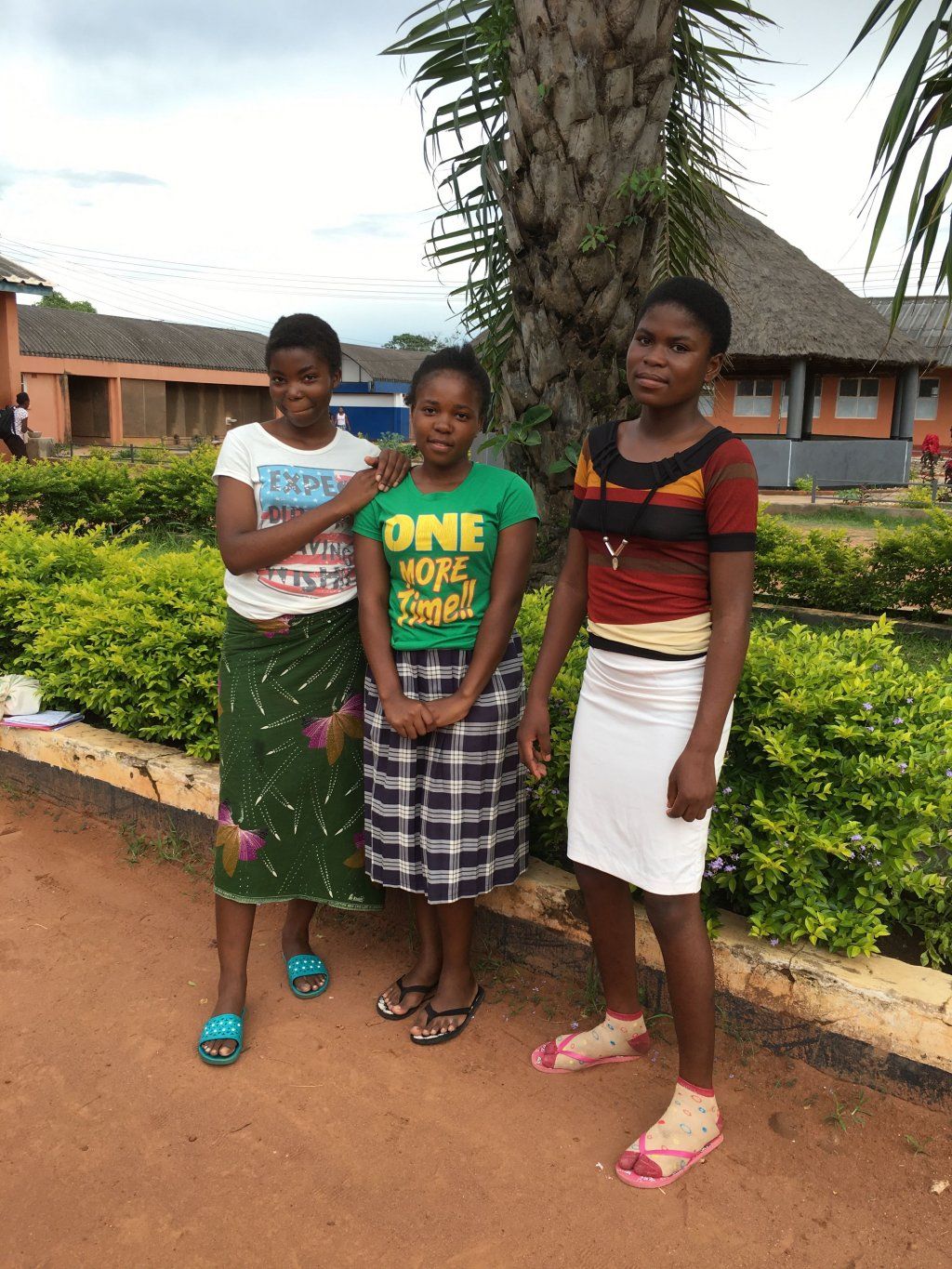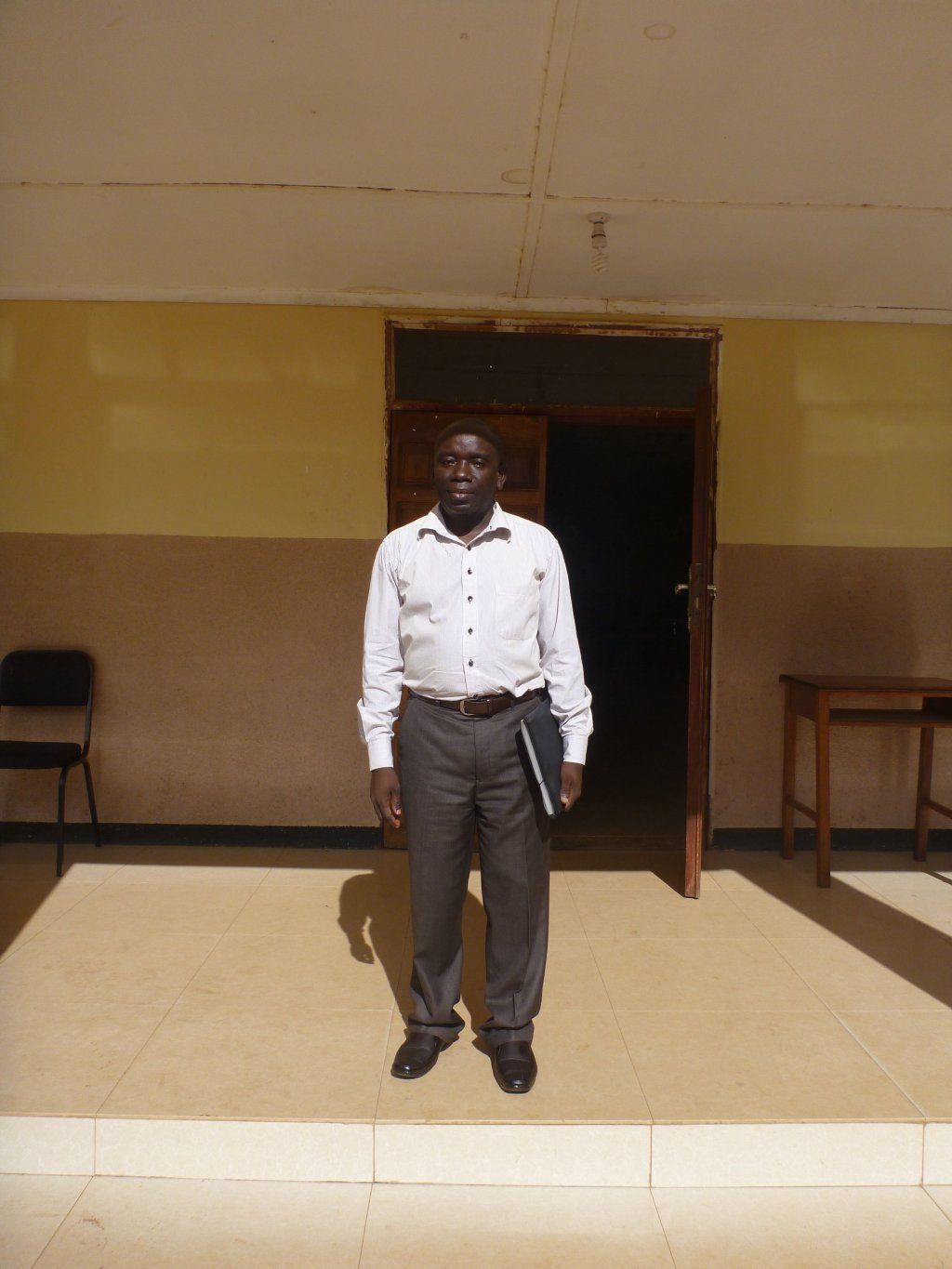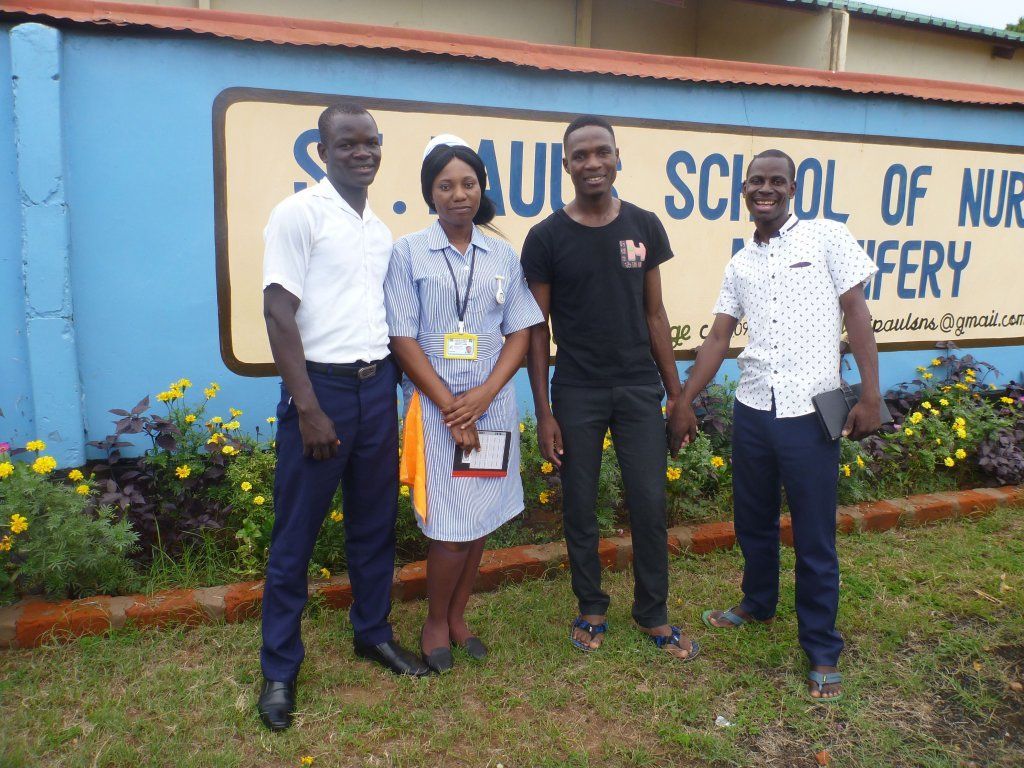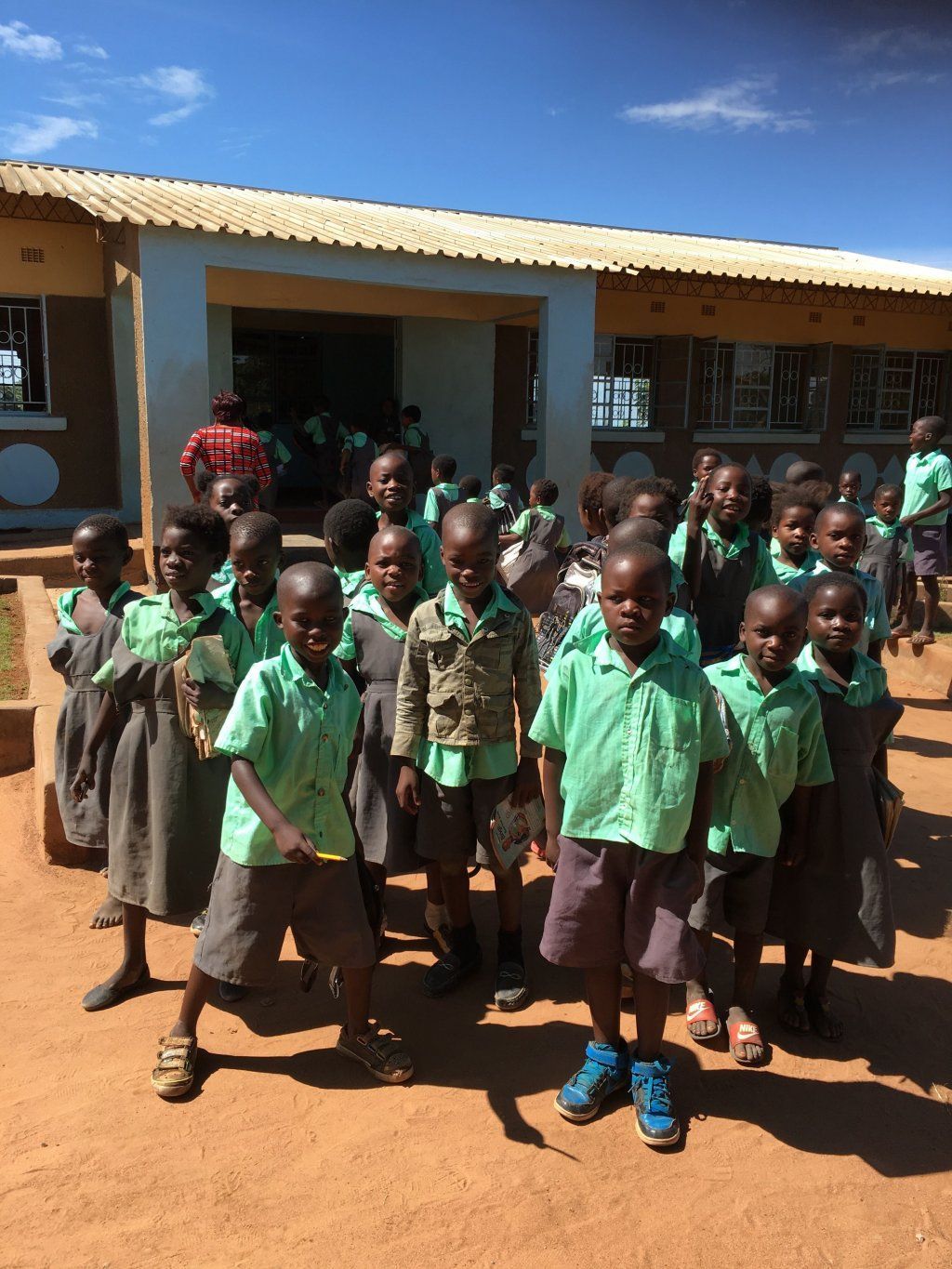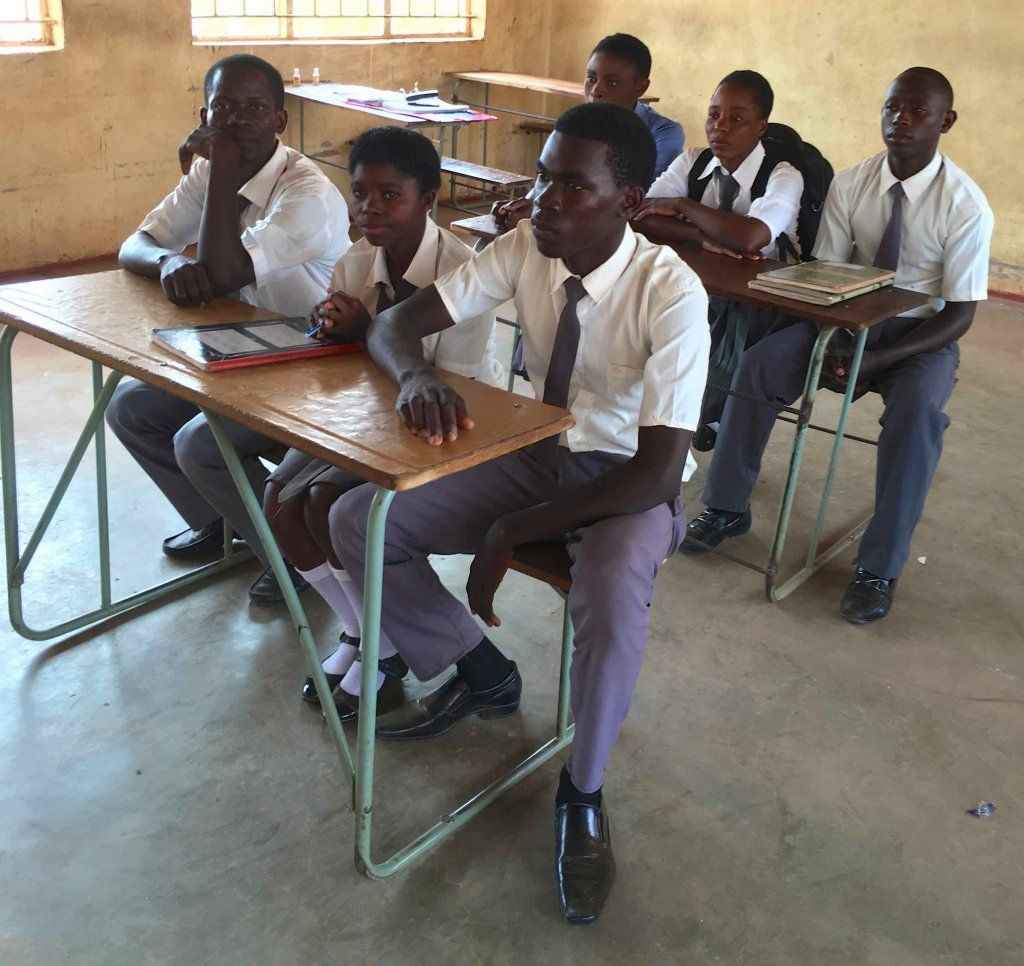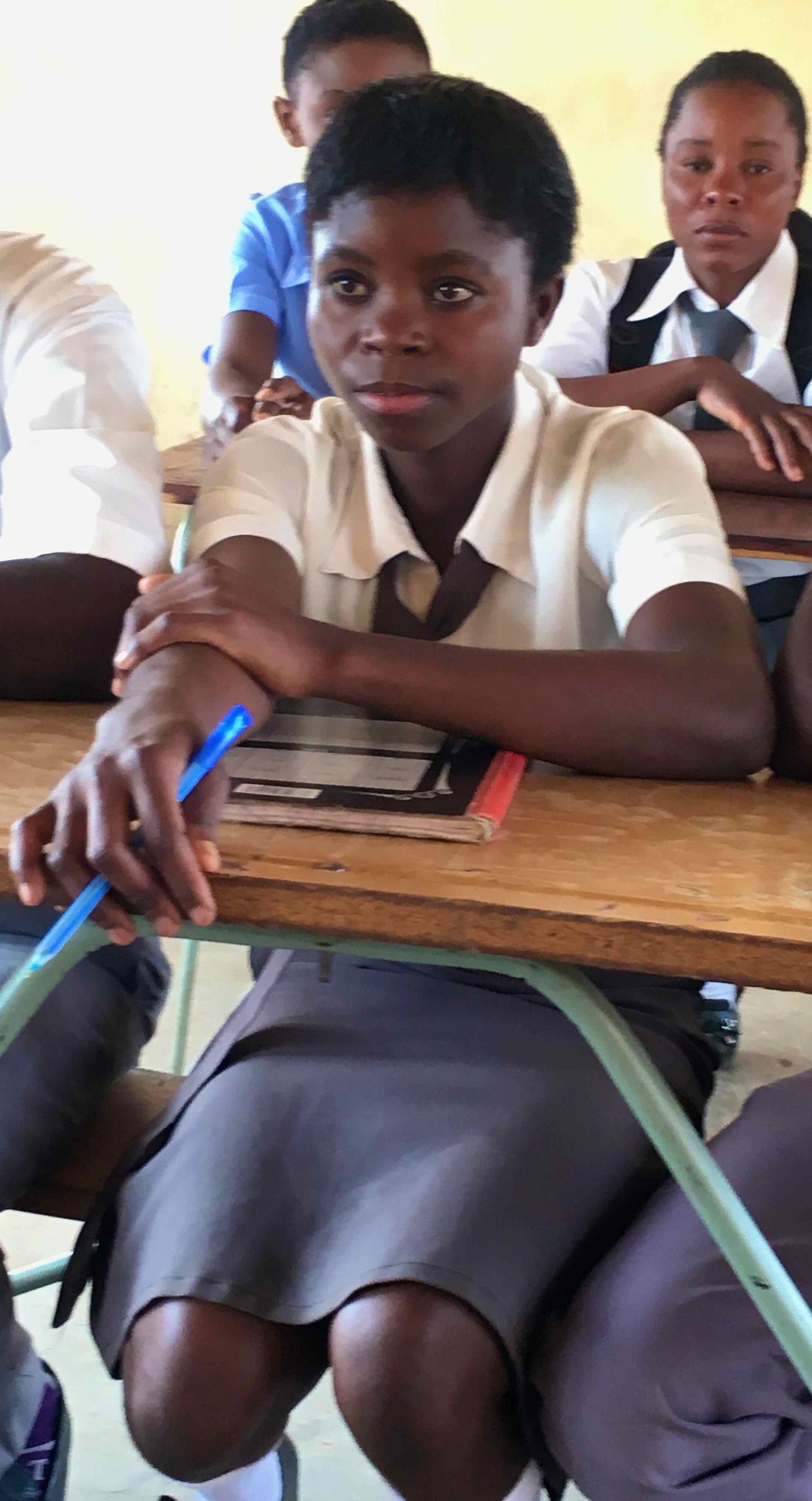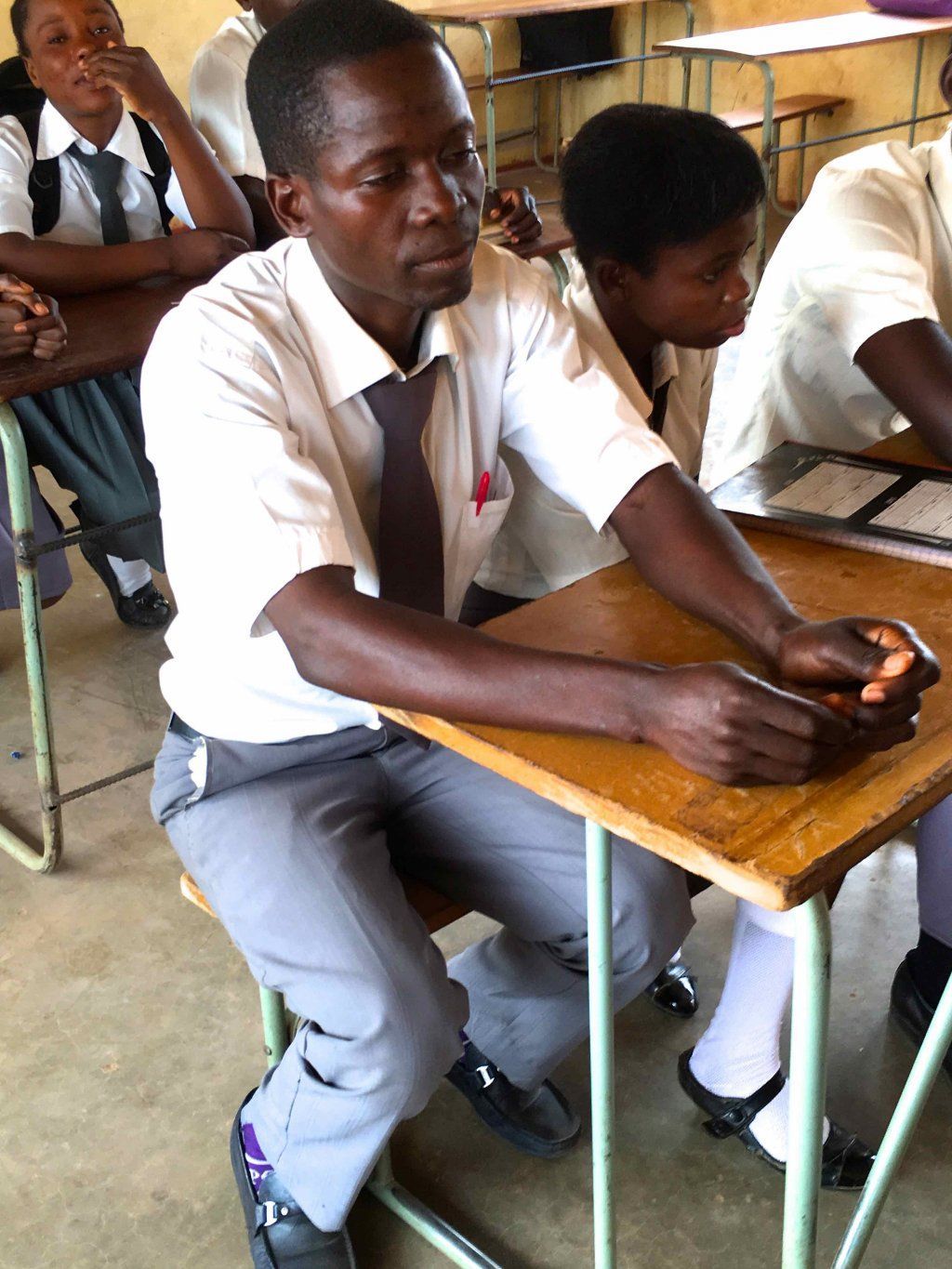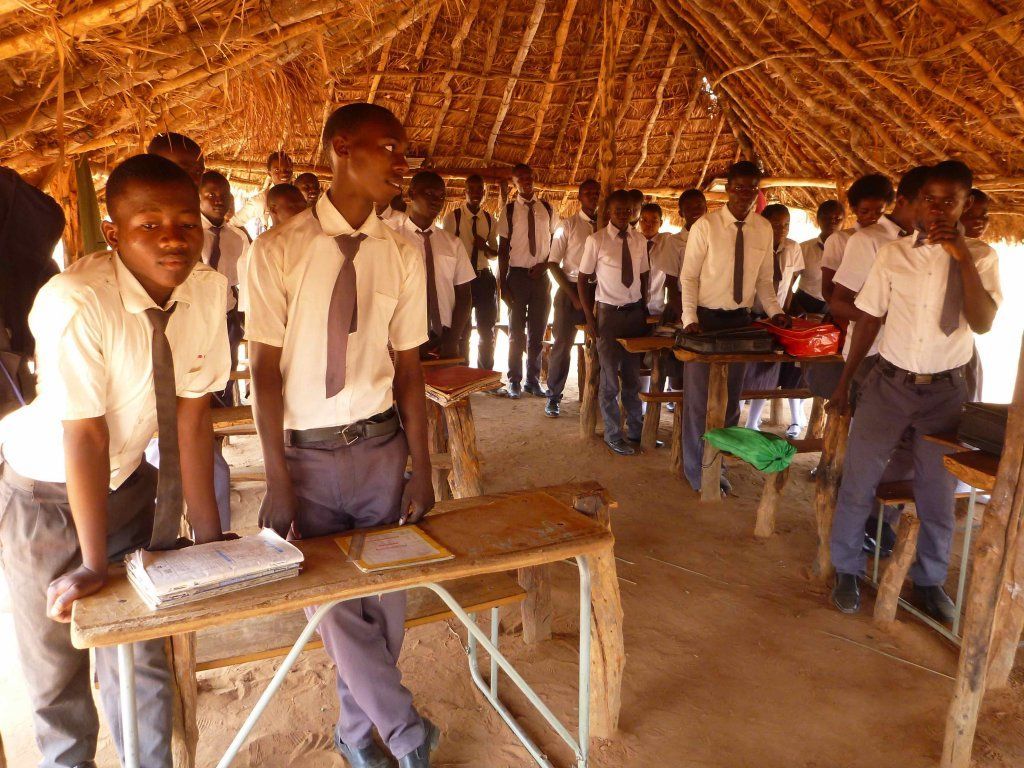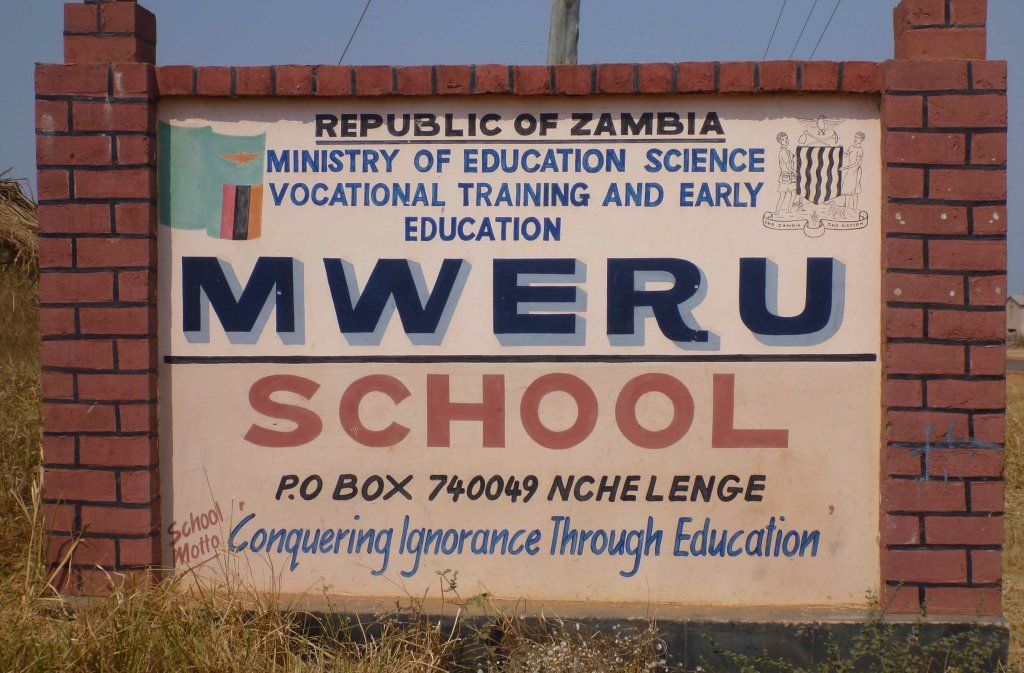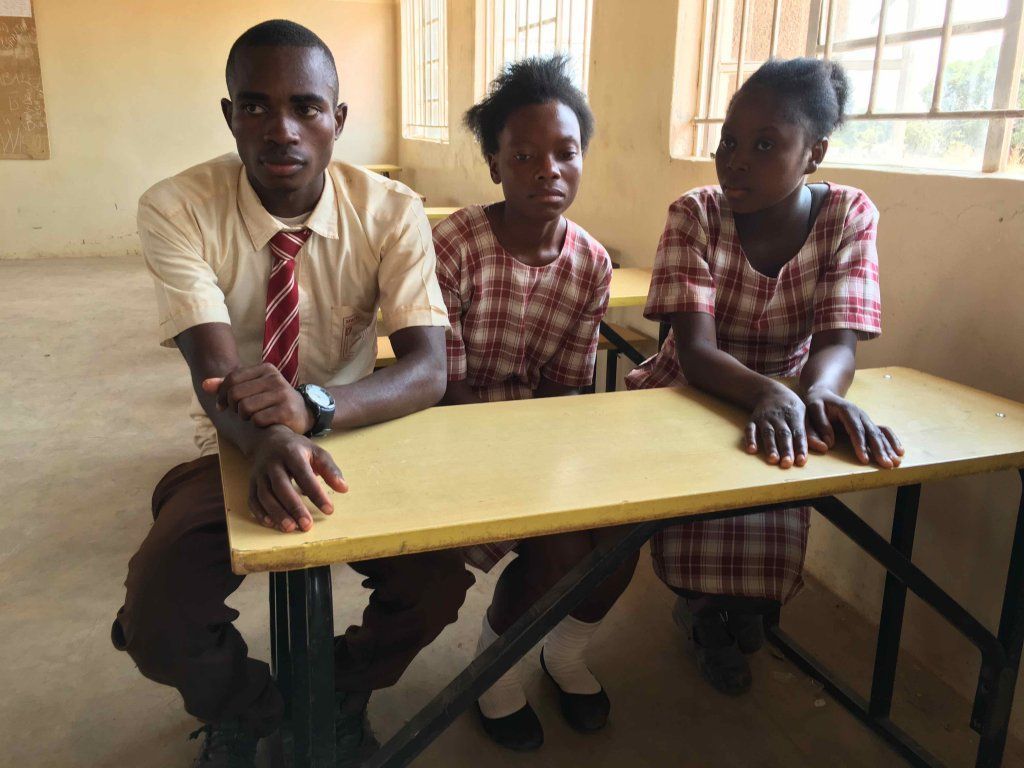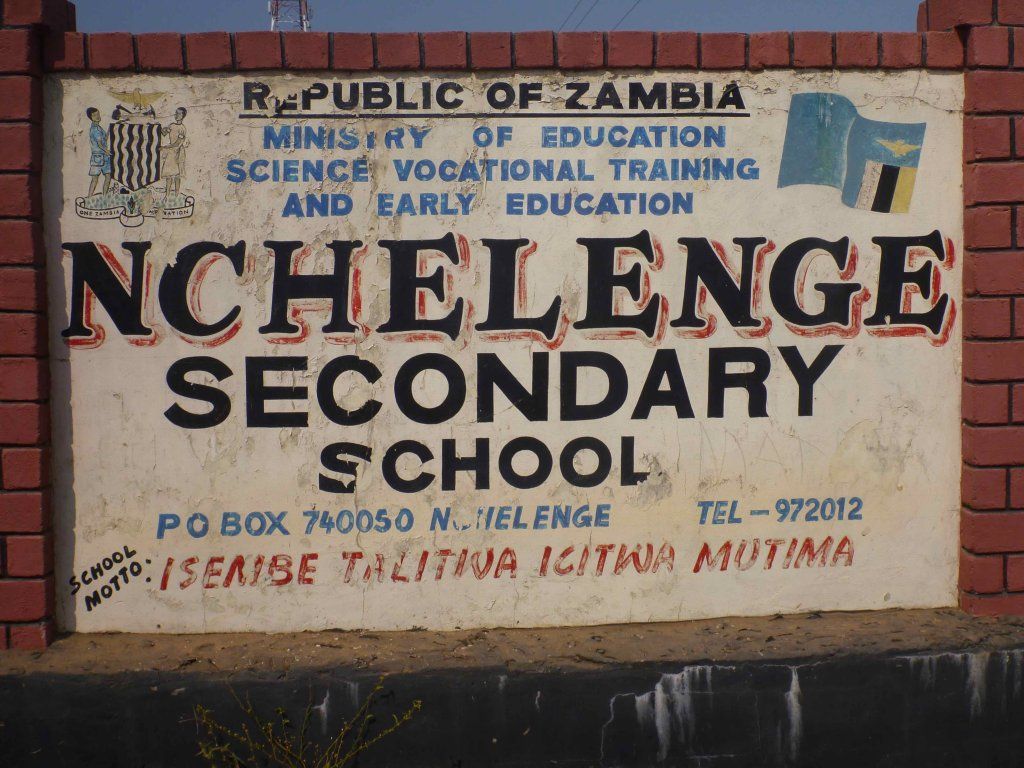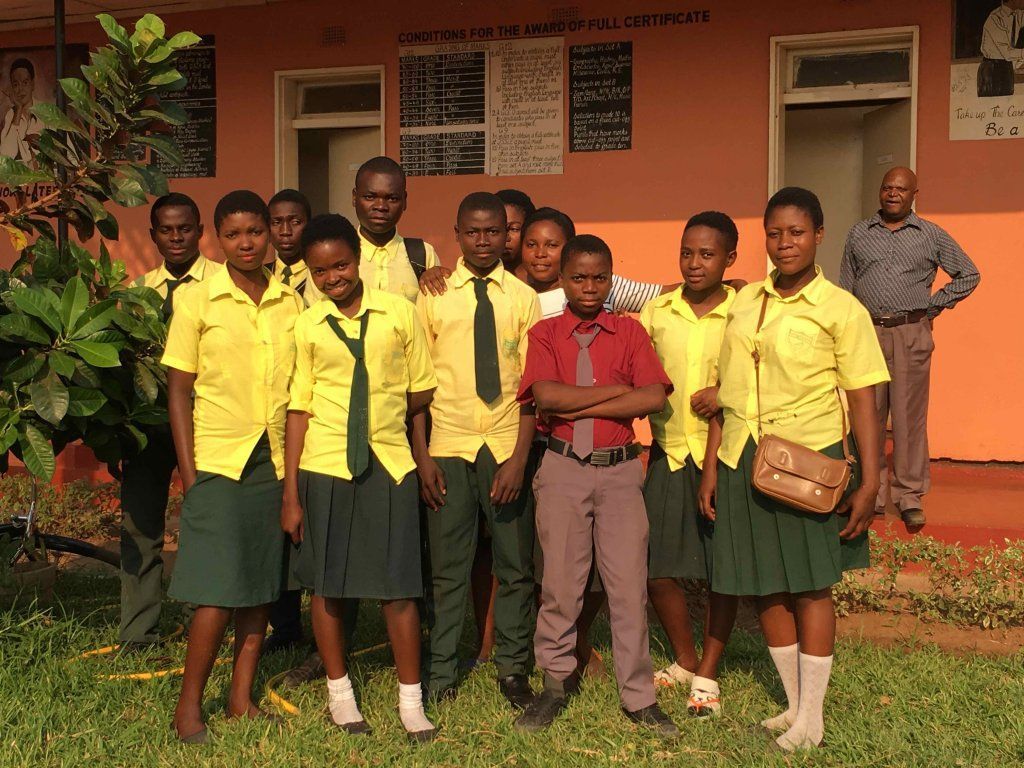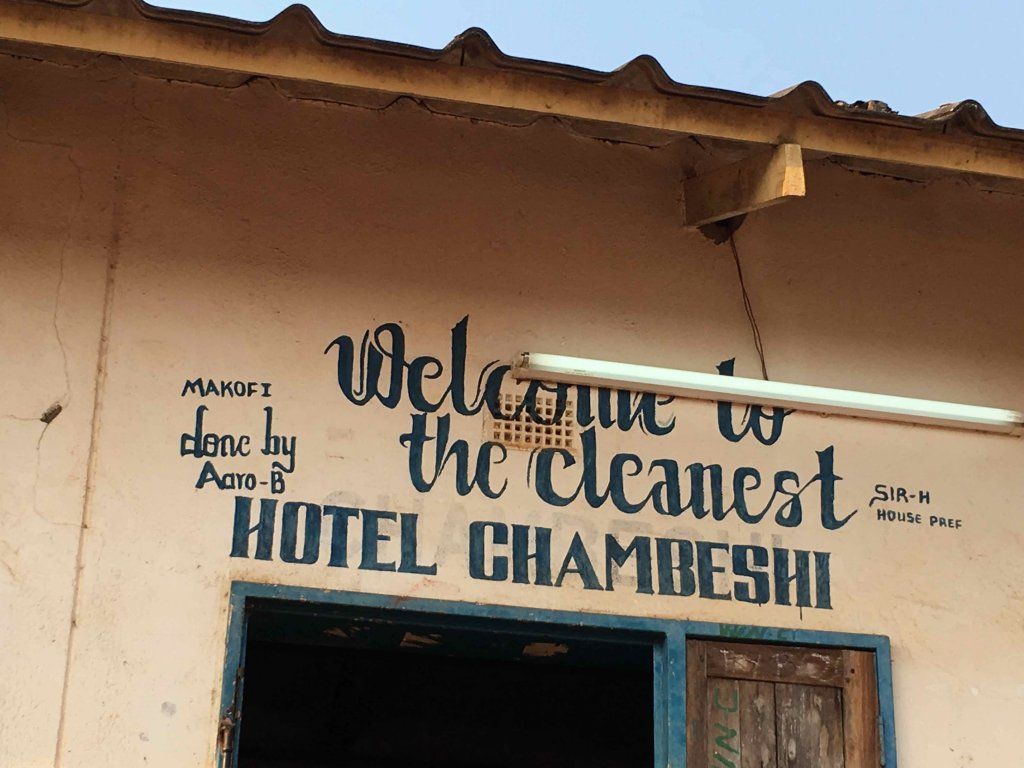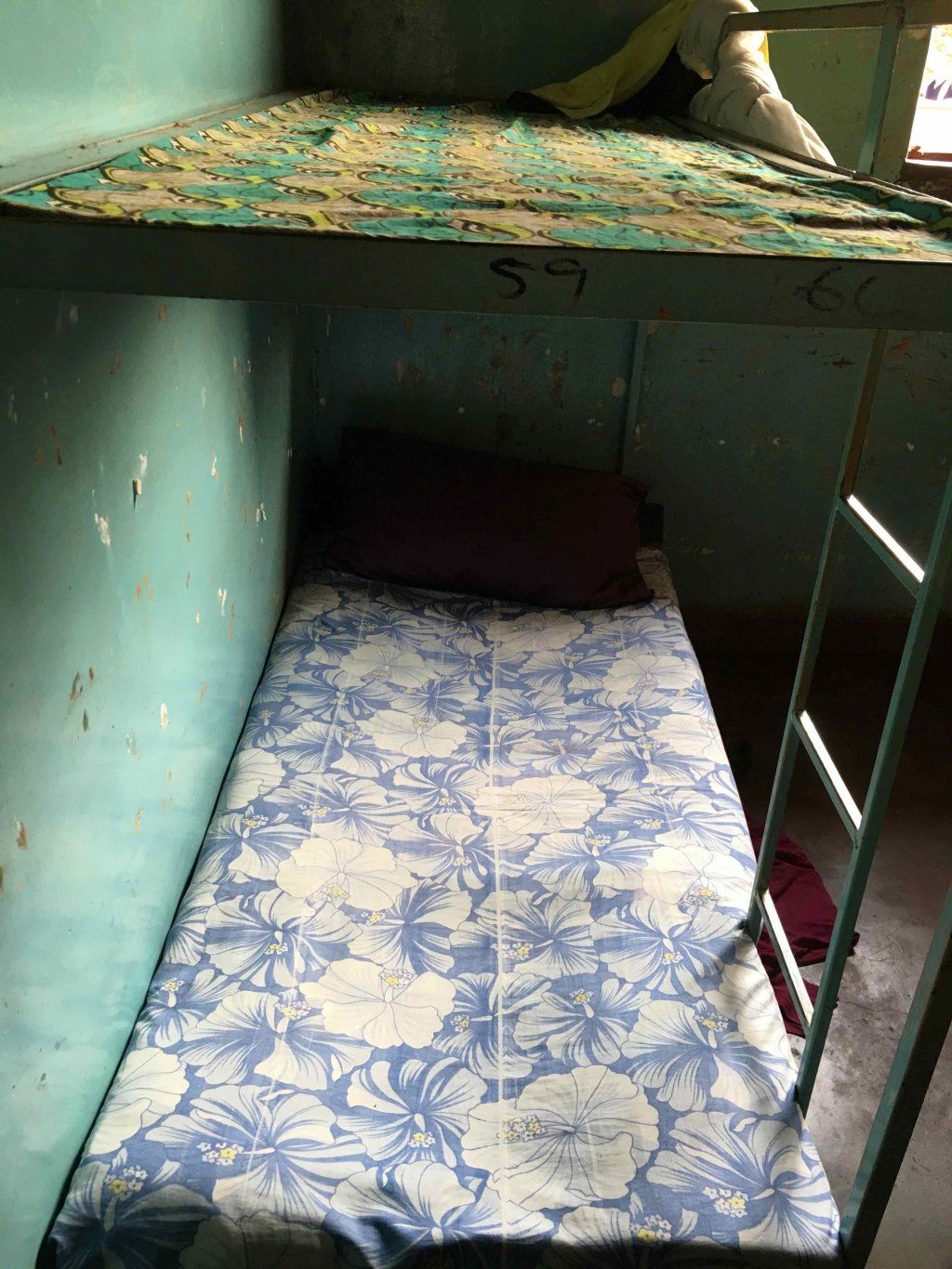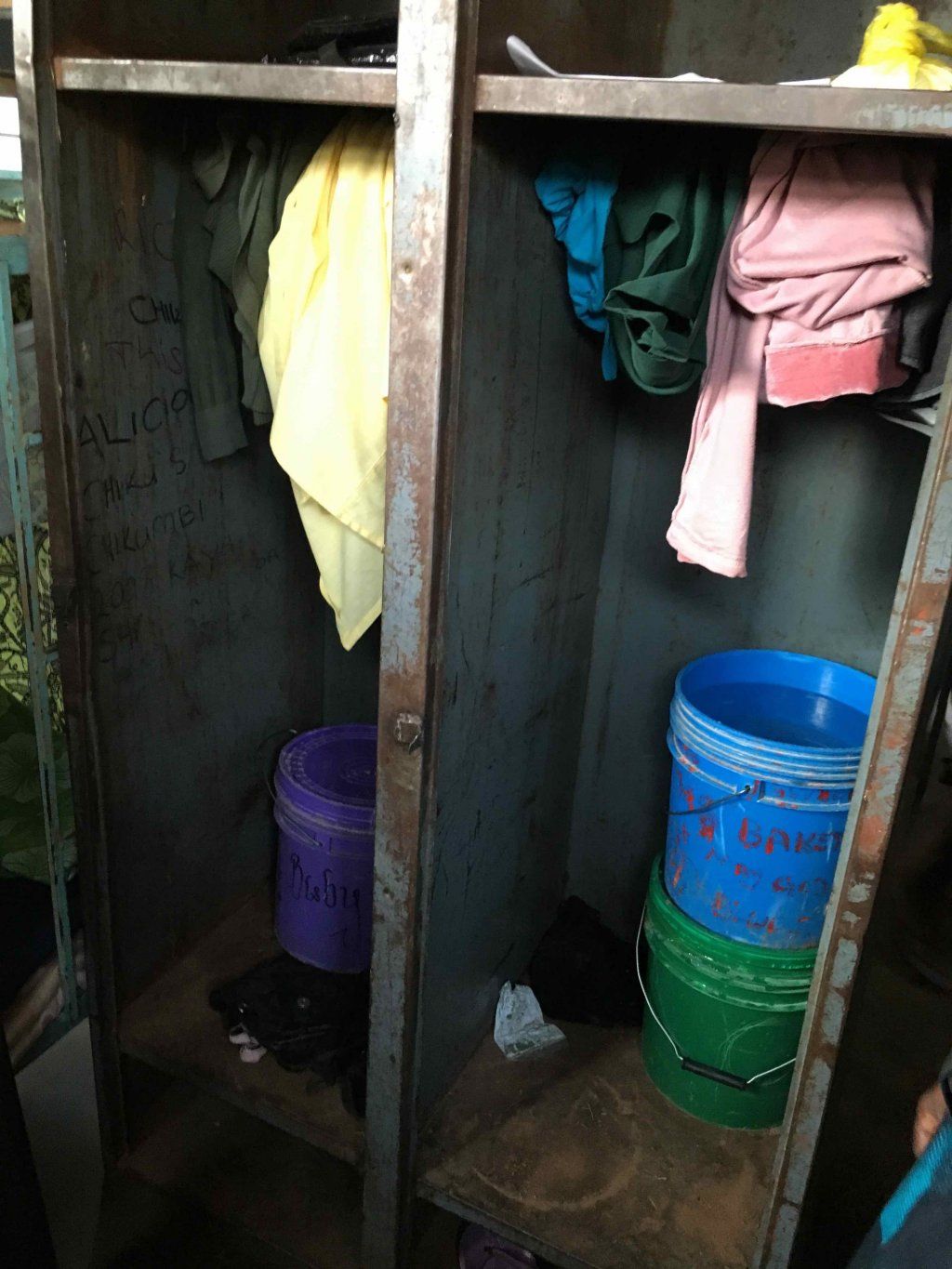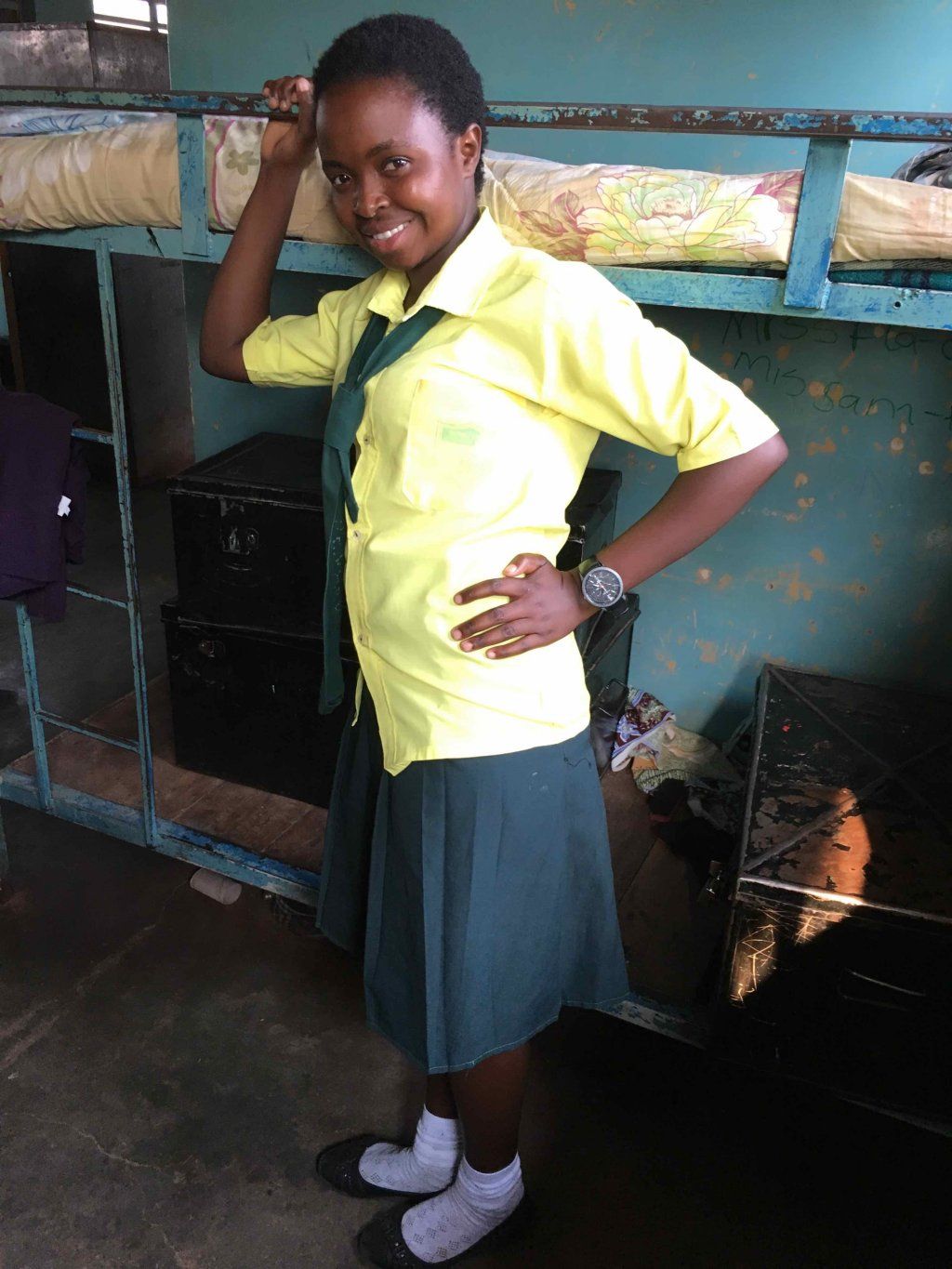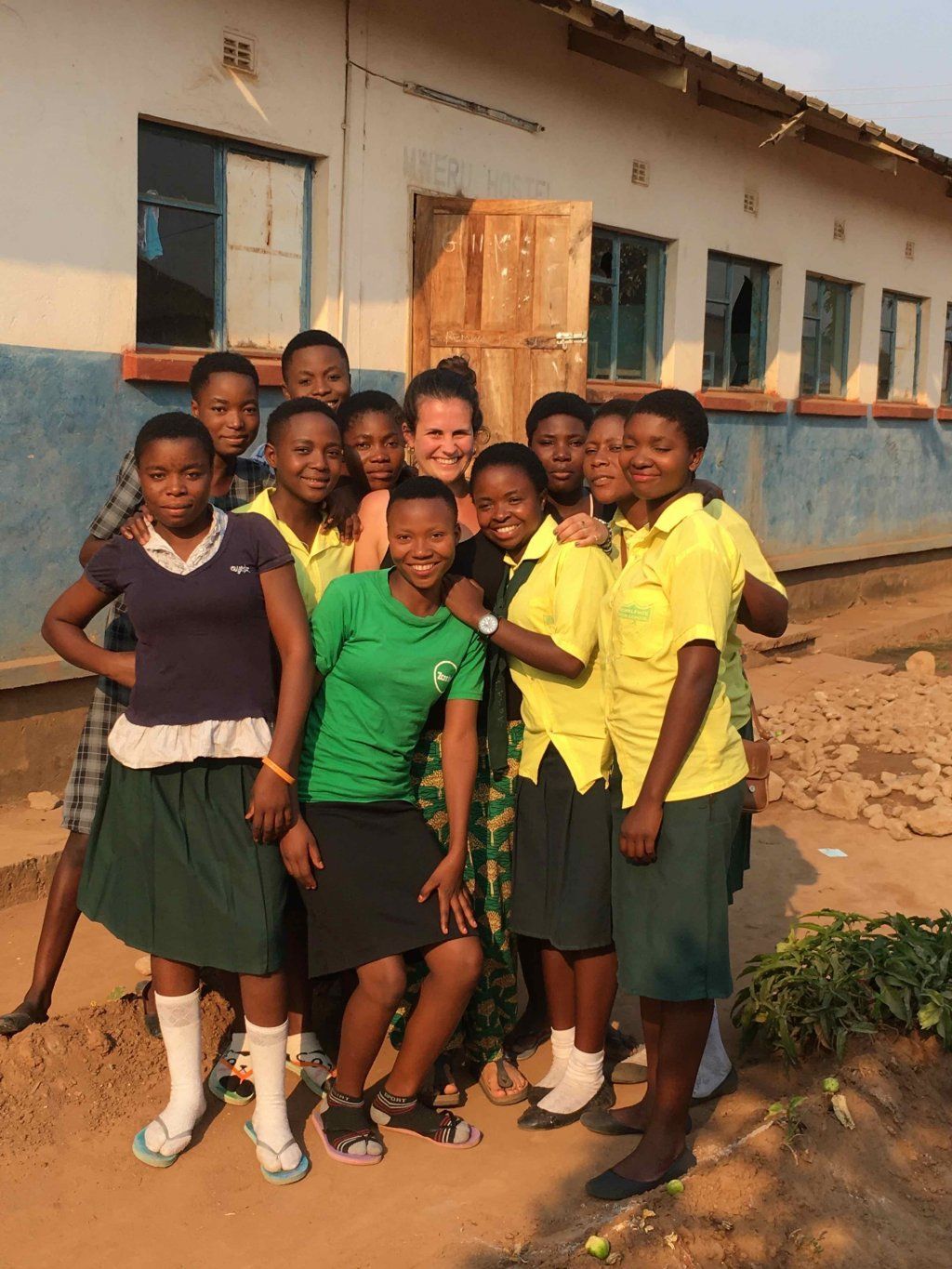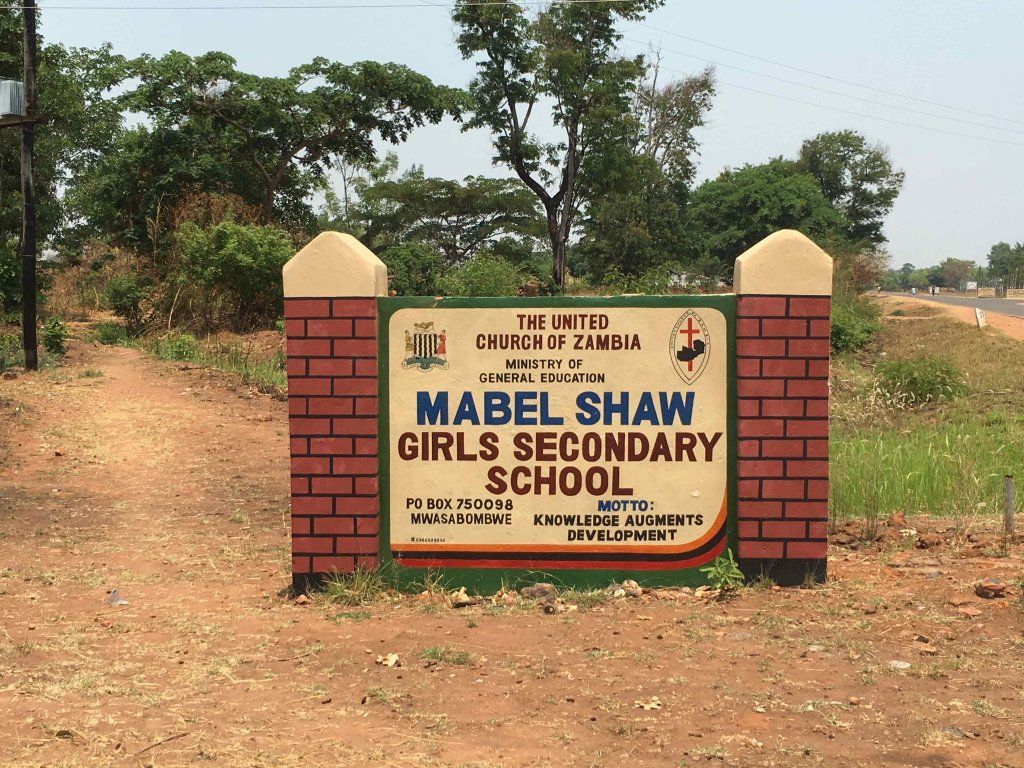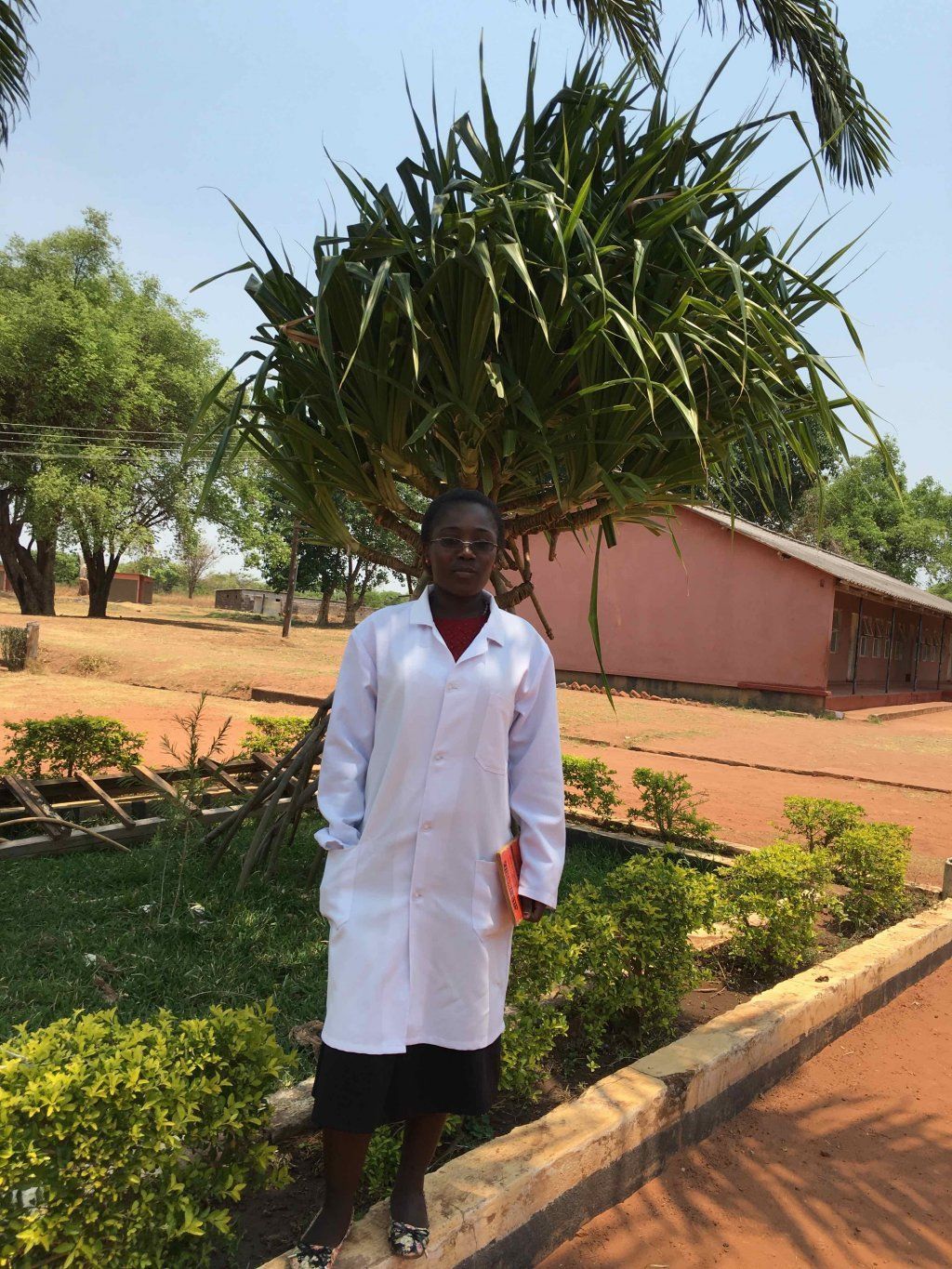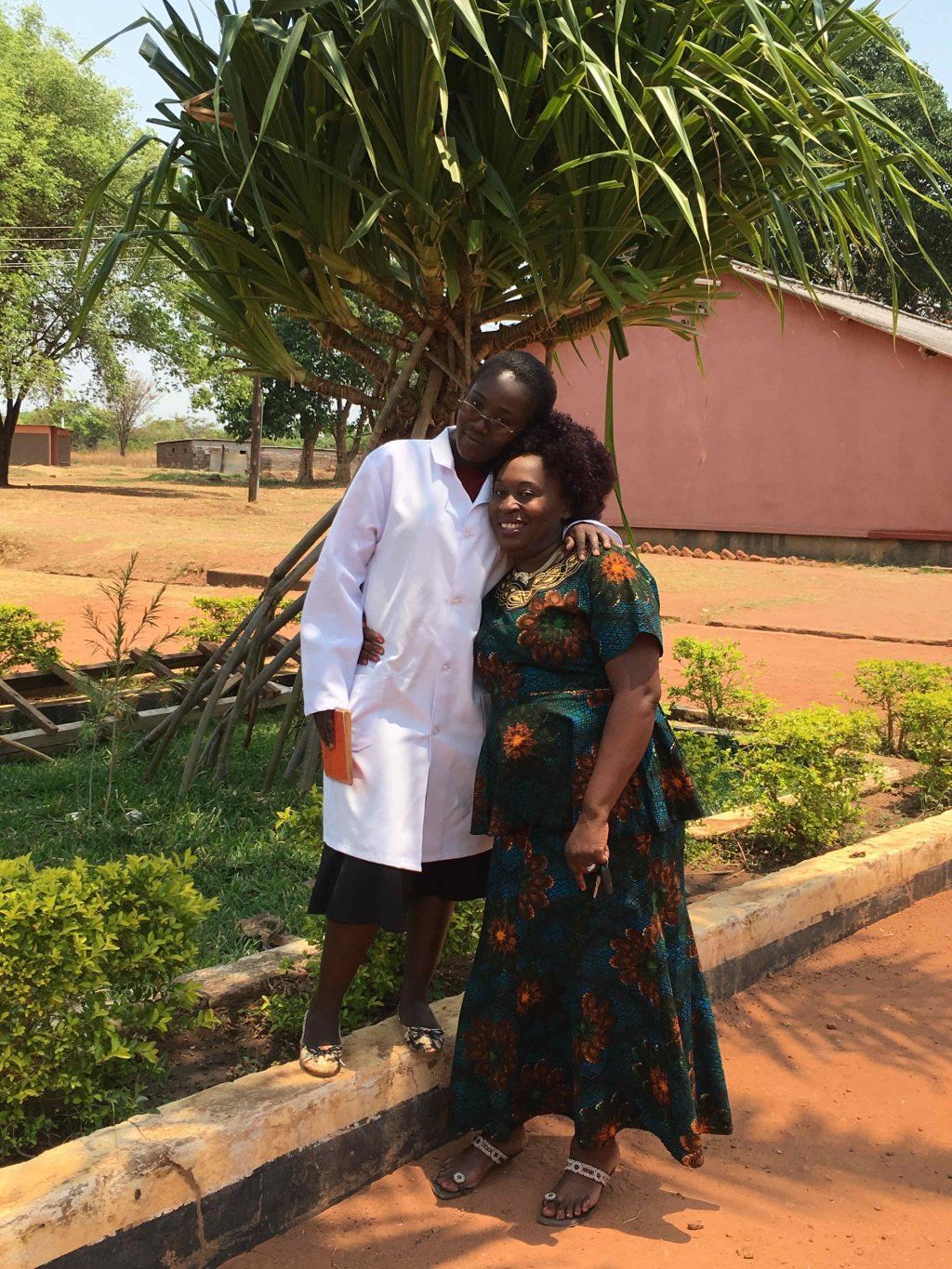“Nnchelenge Secondary School” (February 2017)
“Nnchelenge Secondary School” (February 2017)
Stephen Chipulu, 11th class, “Nchelenge Secondary School, November 2017
I had heard a lot about the Ray of Joy Primary School. This time we had the opportunity to get to know this school. It was founded and is supported by Swiss doctors for orphan children. The school has only 8 classrooms. 7 teachers instruct 1200 children from the 1st to the 9th class. Every class has 40 to 70 children. They either go to school in the mornings or the afternoons. We got to meet Abigirl Kalende and Mushota Kelvin, both in the 8th class.
Abigirl Kalende und Mushota Kelvin, “Ray of Joy Primary School”, 8th class
Abigirl und Mushota in their class, “Ray of Joy Primary School”
Also in the Mutono Secondary School, which I was visiting for the third time, and where I already know through our project, some of our supported young people, it was quiet in the playground. I would have gladly met the bright Clara Mukobe or the already 30 year old David Mwandu. Clara had already taken her examinations and was waiting for the results.
For David it wasn’t possible to go to school for many years, because his parents had died. Only through the Orphan School Project could he grace the school bench. At this school we also got to know Wilmot. A clever boy, who stands out, because he is a lot smaller than his colleagues. The reason is a developmental defect of his jaw joint, which over the years has made it impossible for him to eat properly. We want to help this young boy further and plan a jaw operation by specialists in Switzerland (see “A Jaw for Wilmot”).
We pay the school fees for 13 pupils at the Mutono School. The principal, Mwansa Tarsisias is also on the board of the St. Paul’s Hospital, and choir master of the church choir.
“Mutono Secondary School” (February 2017)
In the middle: David Mwandu (11th grade), Wilmot Masumbuko (10th grade) and
Clara Mukobe (12th grade)
On our special school trip, Jacob Chanda took us to the Mweru Secondary School, where the principal, Mr Mulengajc gave us a little tour. After we had seen several classrooms, where teaching was taking place, we discovered under a big tree in the outside area, a few pupils of the 8th and 9th classes busy with drawing. We gave them our crayons from Switzerland that we had brought with us.
Mweru Secondary School (November 2017)
Mweru Secondary School (November 2017)
As already mentioned, 20 pupils completed their schooling this year. Some of them wish to complete a higher education, in other words, attend a college. To show how sustained our support for a higher education can be, we want to relate the visit to Doreen Chalambwe at the Mabel Shaw Girls Secondary School.
It was a hot afternoon and we were on the way with Jacob Chanda, in the car. The journey lasted a good hour. We were fascinated by the different cloud formations in the skies. It would soon rain again.
Doreen is the best example of a successful education for one of our supported young people. She has been a teacher at this school since 2014, and teaches economics. She was supported through the Orphan School Project from the 10th class through the higher education as a teacher. (see Annual Report 2016).
Doreen Chilambwe with the headteacher Moreblessing Ng'onomo at Mabel Shaw Girls Secondary School
(September 2016)
Doreen would also love to attain the “Degree for Commercial Subjects”. She cannot afford to do this though at the moment with the money she earns, because this is needed by her family, for whom she carries a lot of responsibility. Doreen wants to be a good role model for lots of young people, who, like herself, have lost their parents at a young age. Among these could definitely Reginah Kabinda (8th class), Dyness Nachalwe (10th class) and Joan Sunga. M (11th class) be counted, 3 of the 4 girls that we support in this school, and which we were able to get to know. Their plans to study medicine, to become a dentist or English teacher, show their motivation.
Reginah Kabinda (class 8), Dyness Nachalwe (class 10) und Joan Sunga. M (class 11) at Mabel Shaw Girls Secondary School (November 2017)
A favorite for a higher education is the St. Paul’s School of Nursing. A two year training and a three year training (Registered Nurse with Diploma) are offered. This requires also well educated tutors. Emmanuel Chisala is an instructor at the School of Nursing and, with our support for a higher education, completed the Bachelor of Nursing Science at the UNZAS Ridgeway Campus. He will continue teaching at the St. Paul’s School of Nursing, and in addition, wants to complete the Master of Public Health (18 months).
I was also able to meet Emmanuel Kalifungwa, Barbara Bwale, Ernest Chalwe and Felix Chanda C, all graduates of the St. Paul’s Nursing School.
Emmanuel Chisala, Tutor and IT specialist at St. Pauls’ School of Nursing (November 2017)
Emmanuel Kalifunga, Barbara Bwale, Ernest Chalwe und Felix Chanda C at St. Pauls’ School of Nursing (November 2017)
Unfortunately it was not possible for me to visit more students at other colleges, because they were too far away.
Those who are given the opportunity of an education, know what an advantage in life it is!
Thanks to the generous contributions of our sponsors, we are able in 2018 to continue to support 87 pupils at the secondary schools, and want to additionally take on 15 students, as shown on the following list for higher education (colleges). The yearly fees at the colleges stretch from SFR 260 to 1600. We hope to facilitate the education of craftsmen, such as carpenters and electricians also.
The budget worksheet for the higher education colleges as per December 2017.The price quotations are in Zambian Kwachas.
In the name of the Basel Development Association, I would like to thank all the financial donors, especially the Rotary Club Augst Raurica, the Roman Catholic Church of the City of Basel, the Swisslos Fund of the canton Basel Land, and many private donors.
Béatrice Dolder December 2017
These children want to stay in school.Please support them
Schoolproject for Orphans in Kashkishi, Zambia
Report 2016 (October)
On Sept 28th in 2016 we visited Kashkishi. From all directions children came running and managed to form a large crowd. As in all African countries large numbers of children are usual and are typical also for our village. Sister Catherine Tente, the head nurse of the hosptial, and her team and the students of the nursing and midwifery schools cordially welcomed us with a nice and gay choir performance.
One reason for the trip to Kashikishi was to inform ourselfs on the continued course of the orphan schoolproject and to discuss progress with the responsible persons. As vacations were over and the new school year had already started , we had the opportunity to visit a few schools and make contact with the heads of the institutions, the teachers and some of the students.
Jacob Chanda is the person locally responsible for the orphan-schoolproject. In earlier times he was a teacher but recently has started to work for HBC the Home Based Care. He takes care of HIV positive and AIDS patients at their homes, e.g. by checking their regular medication intake. On his many home visits he noted, that children of sick parents or those, whose parents had died, frequently have no means to continue with school attendance. With the help of the Basel Association for Medical Cooperation he took on the resonsibility for the orphan- school-project. Presently around 80 students are supported. In addition there are now even a few whose higher education we sponsor at the college level : some will be teachers, others nurses or clinical officers. Jacob Chanda has accompanied us to a number of schools in the vicinity of the village of Kashkishi.
In the
« Mutono Secondary School » we were introduced to the principal Mr. Mwansa. He thanked for the support by the HBC, Jacob Chanda and made possible by the Basle Association for Medical Cooperation. He would like additional financial help to allow schooling for 8 more orphans. In one classroom we met 6 of the supported students. Two of them, Clara and David, quite enthousiastically gave us a very vivid story from their school and their future plans.
The school does not have enough classrooms, for which reason exterior rooms had to be built. In one of them we visited students of the 10th schoolyear.



